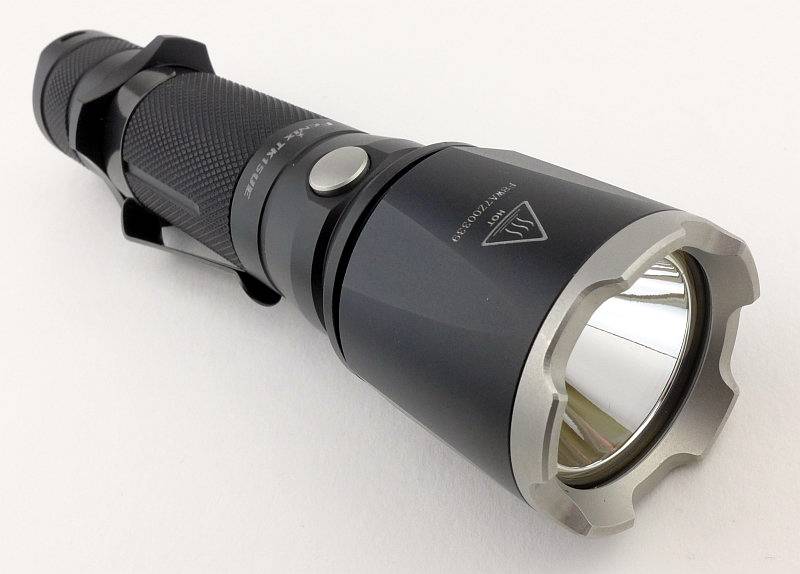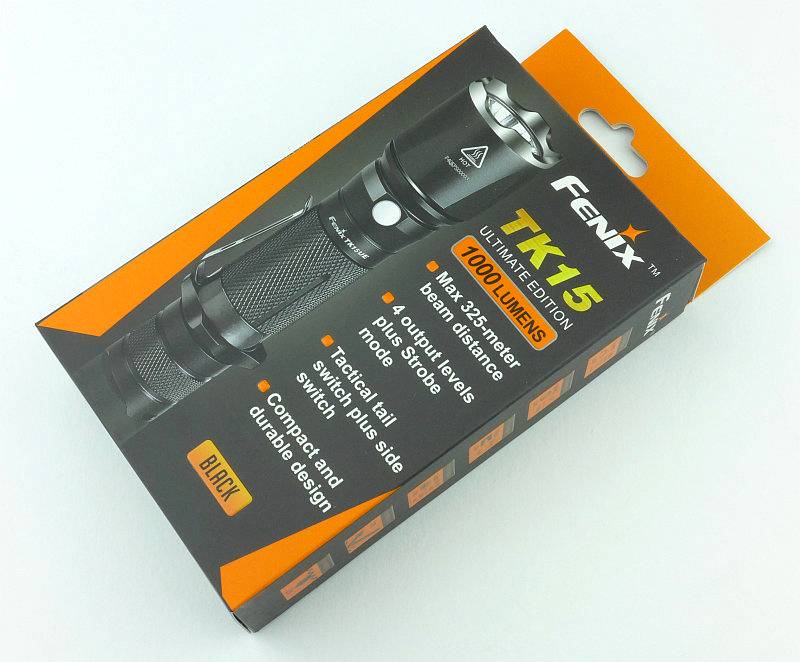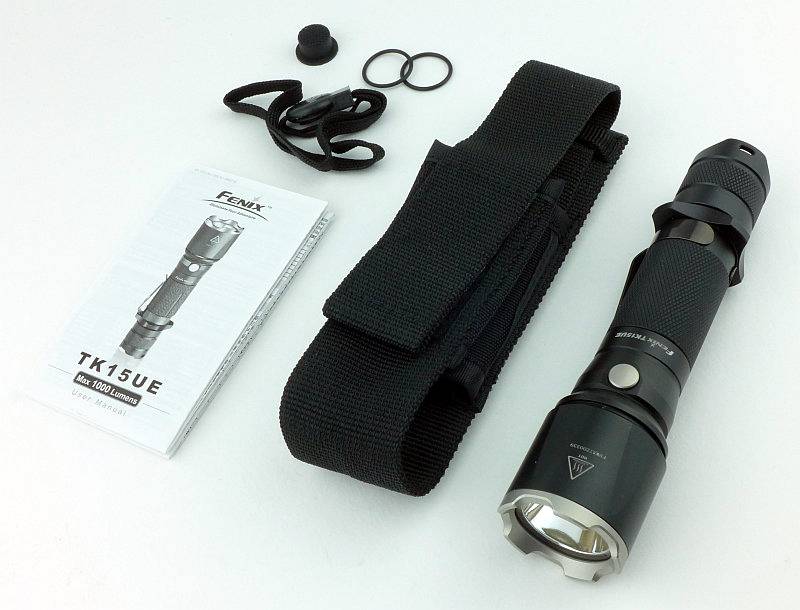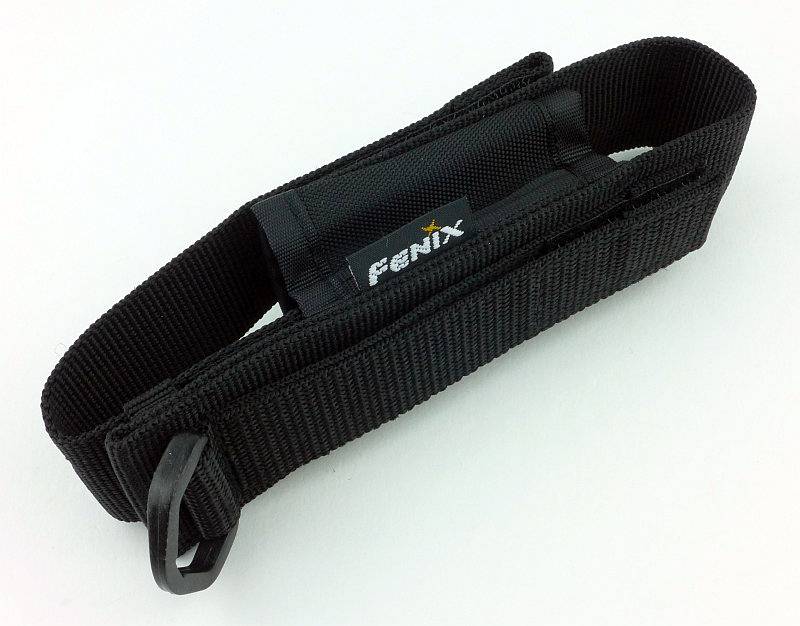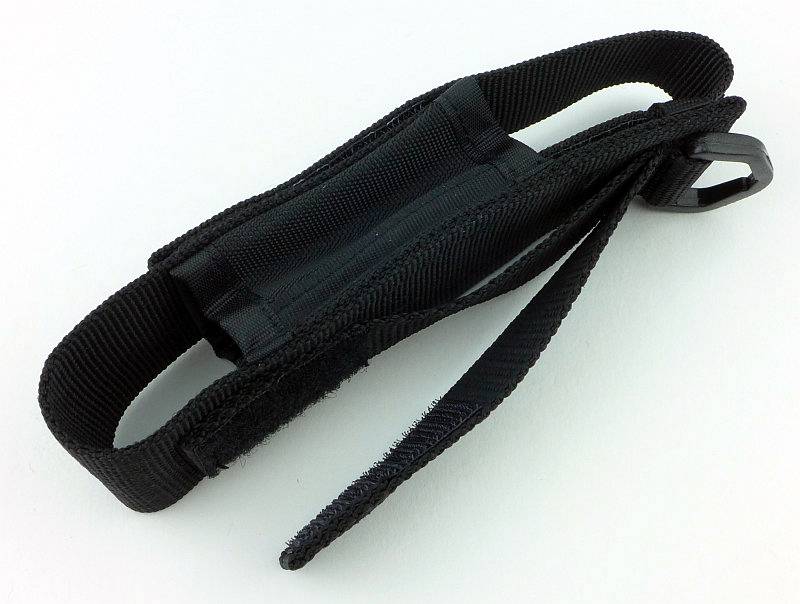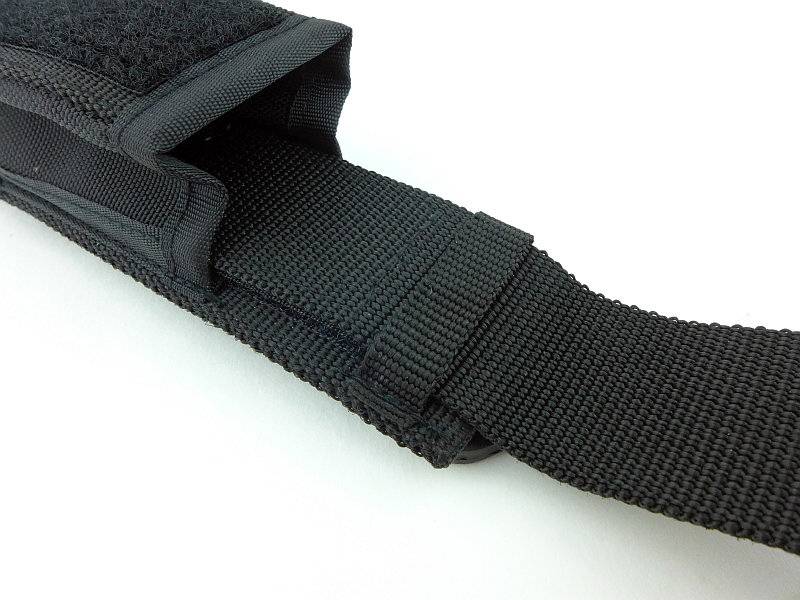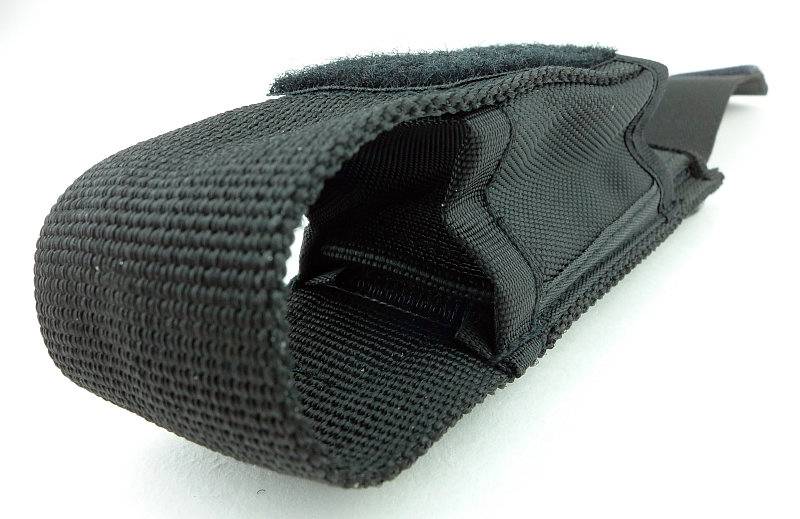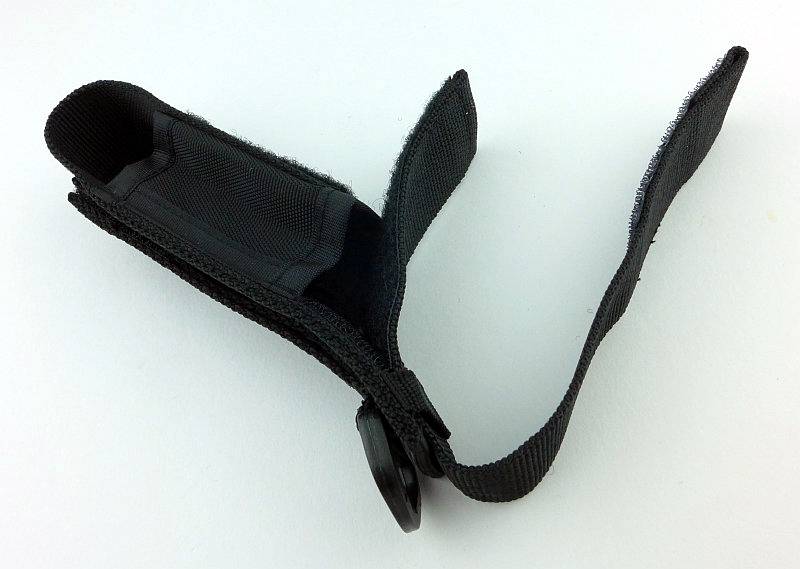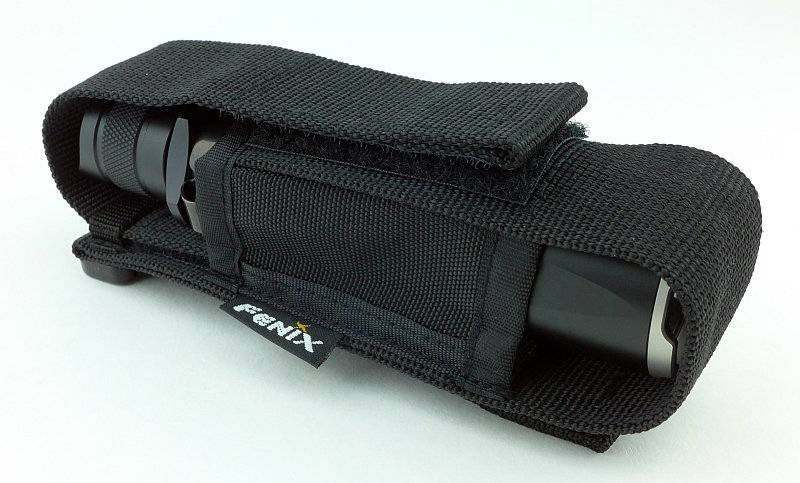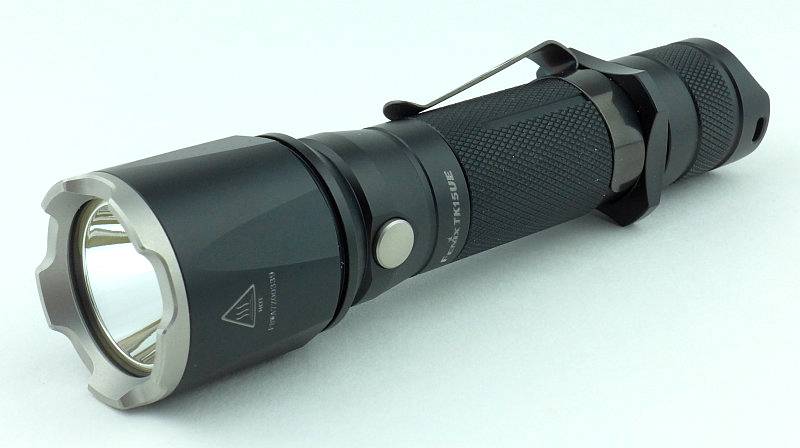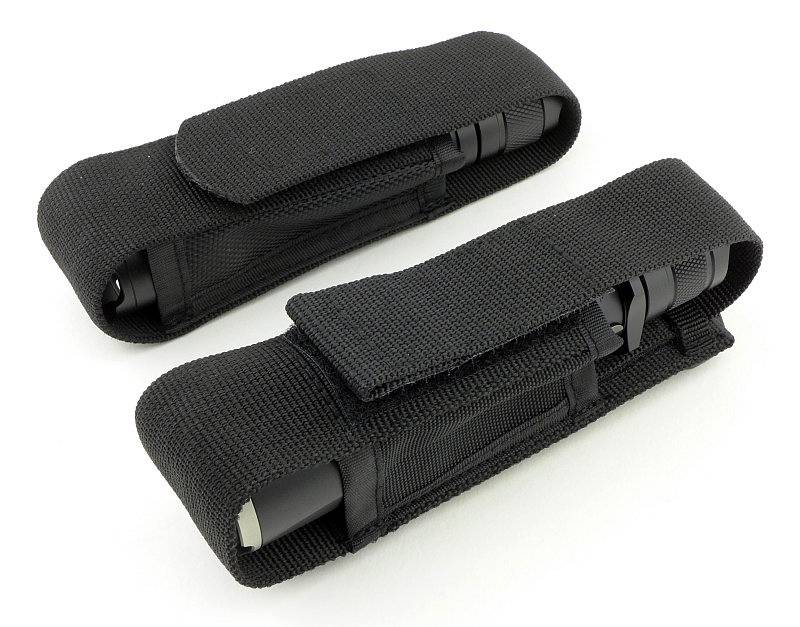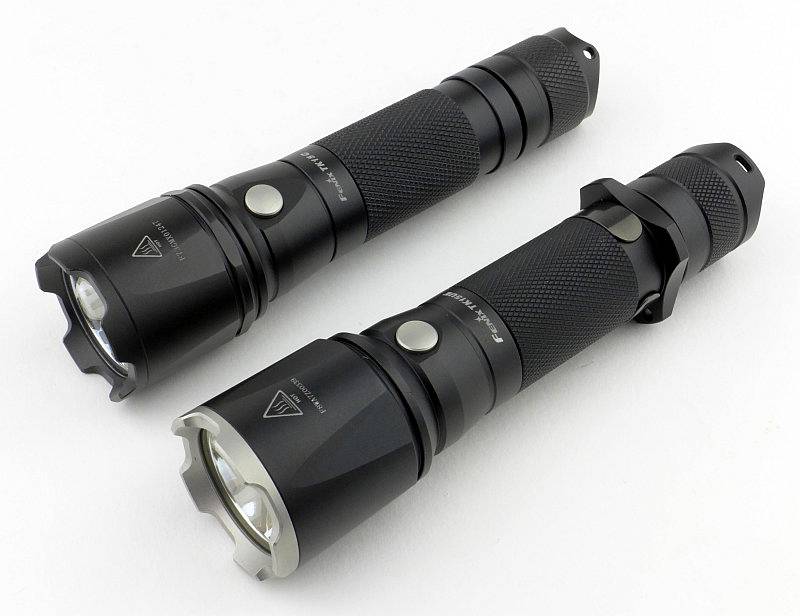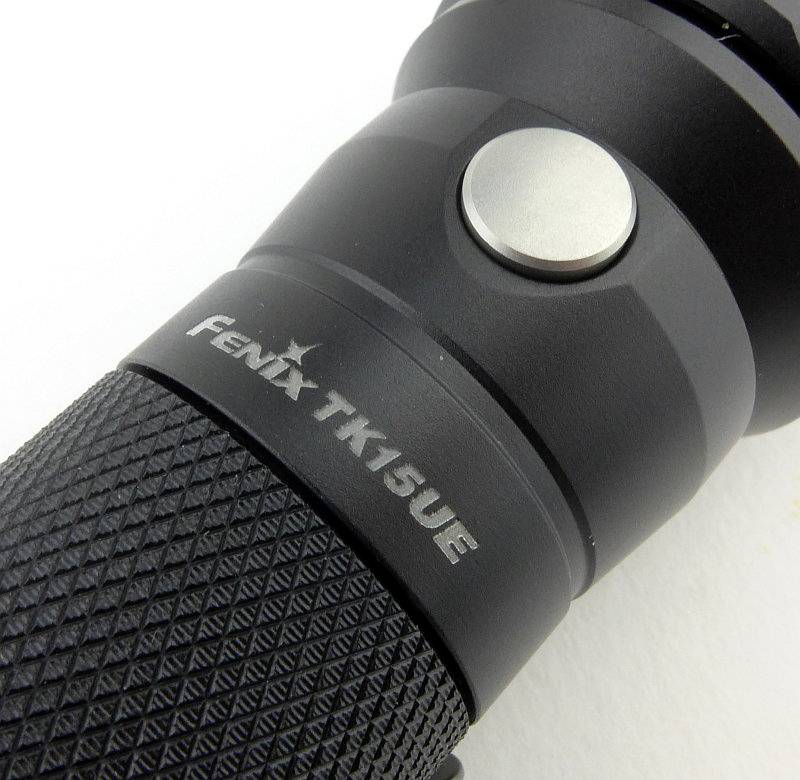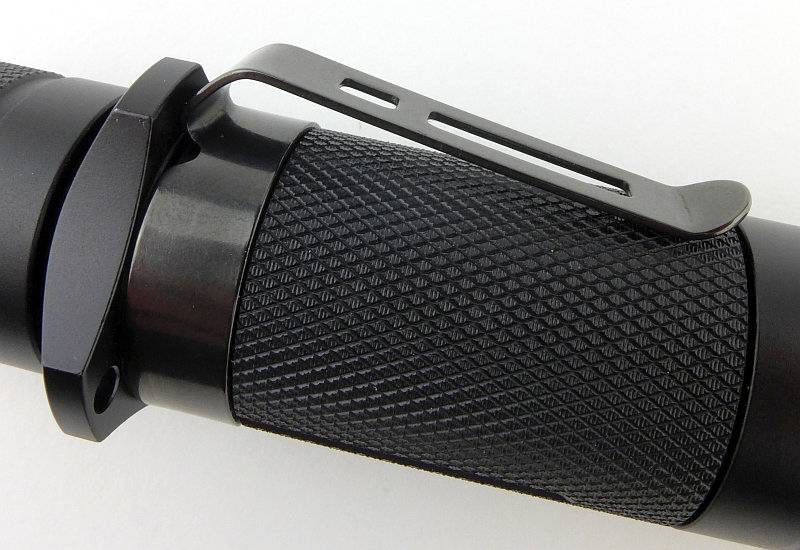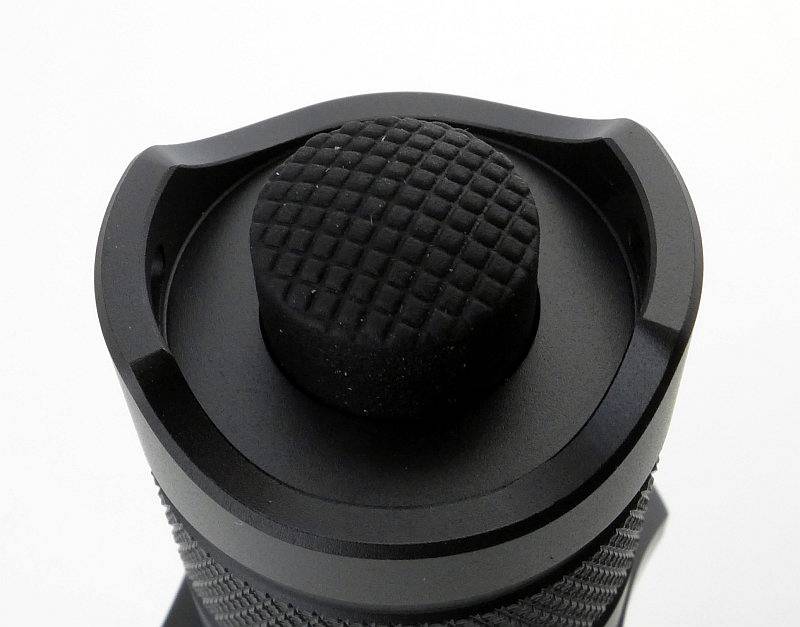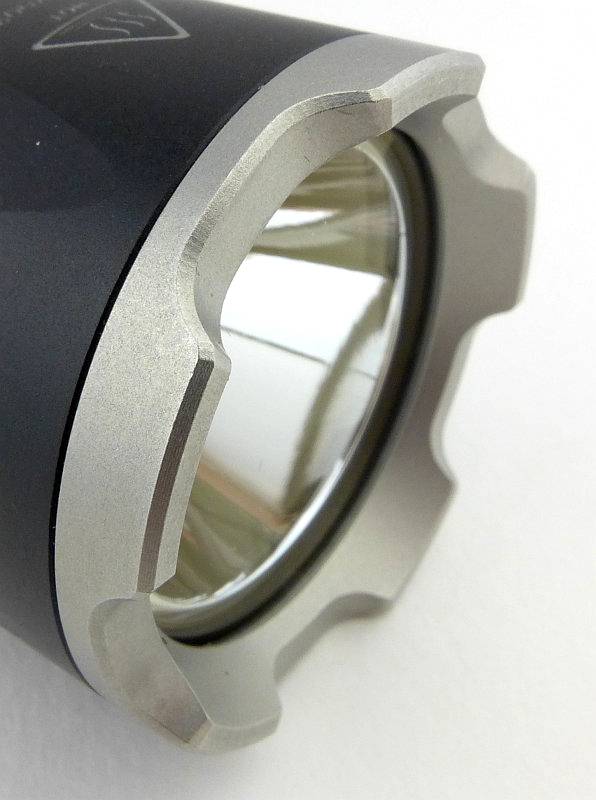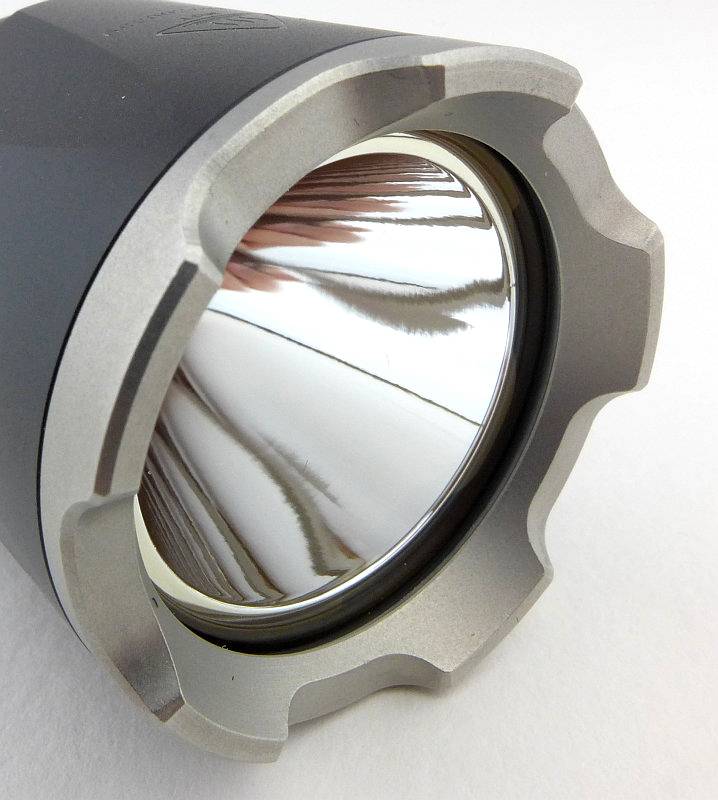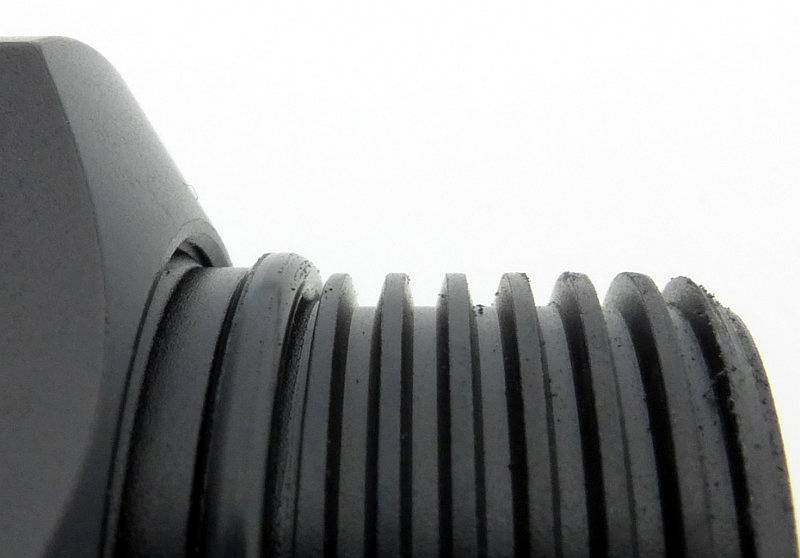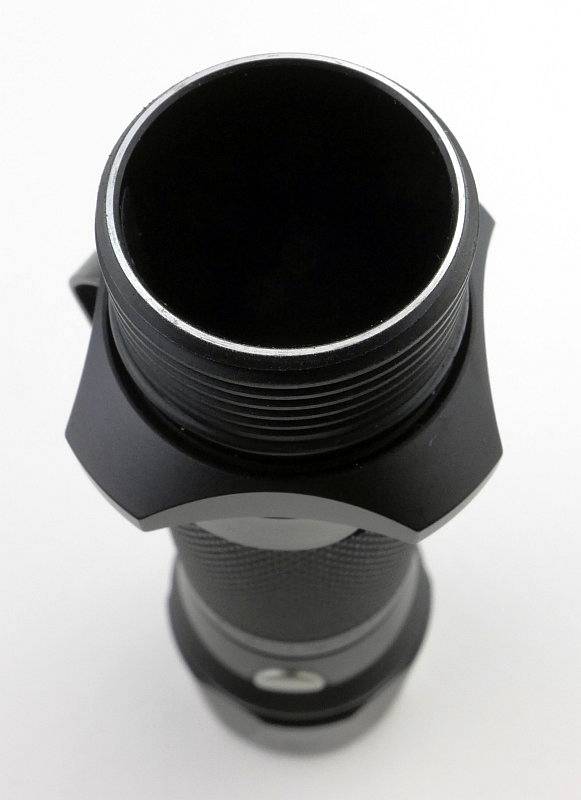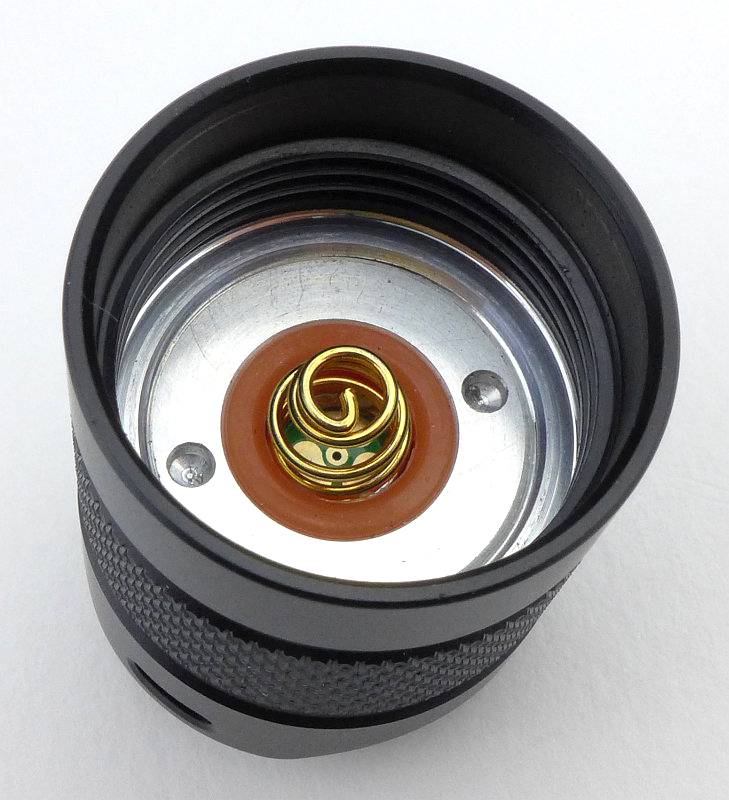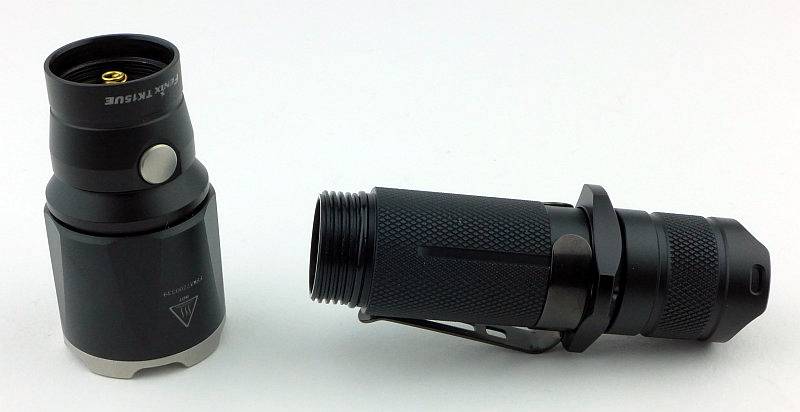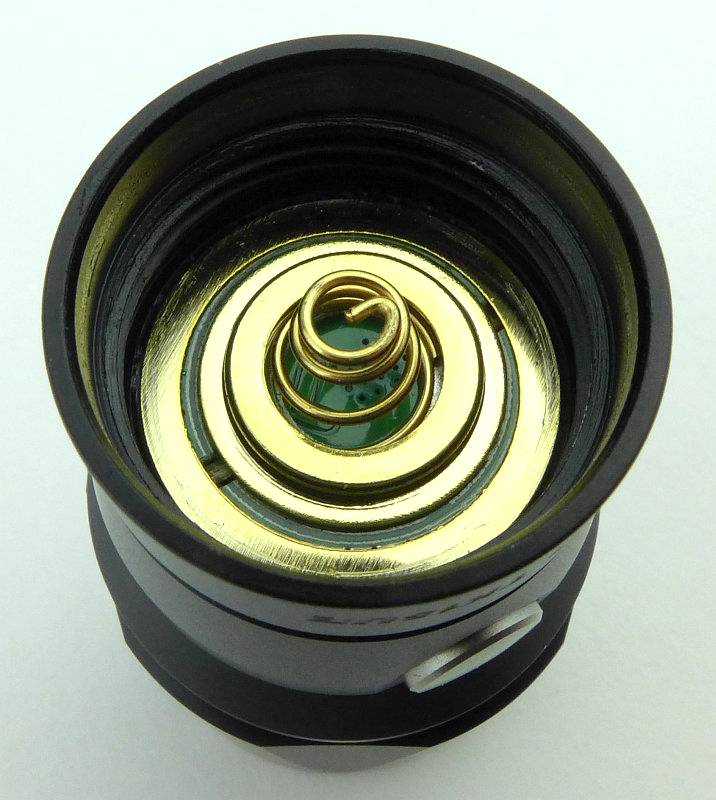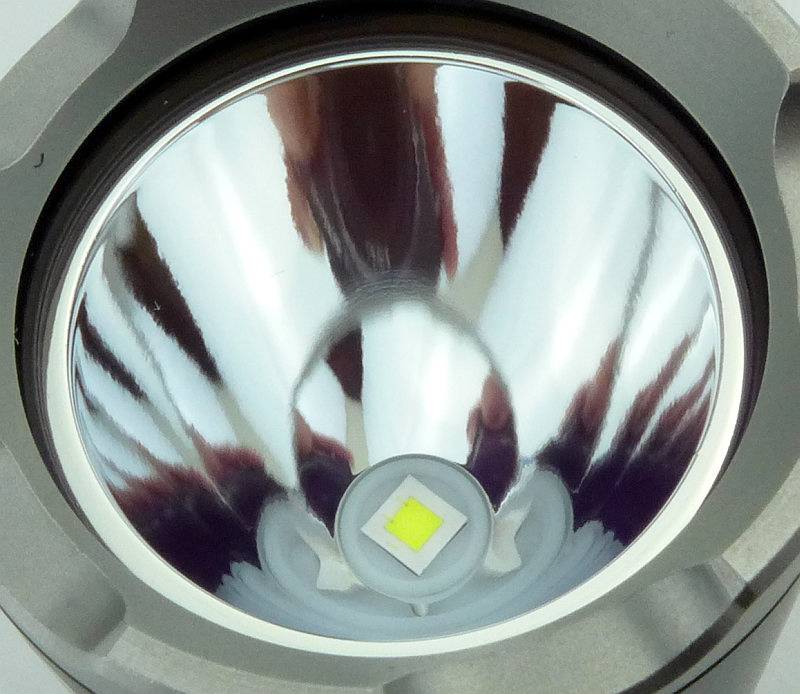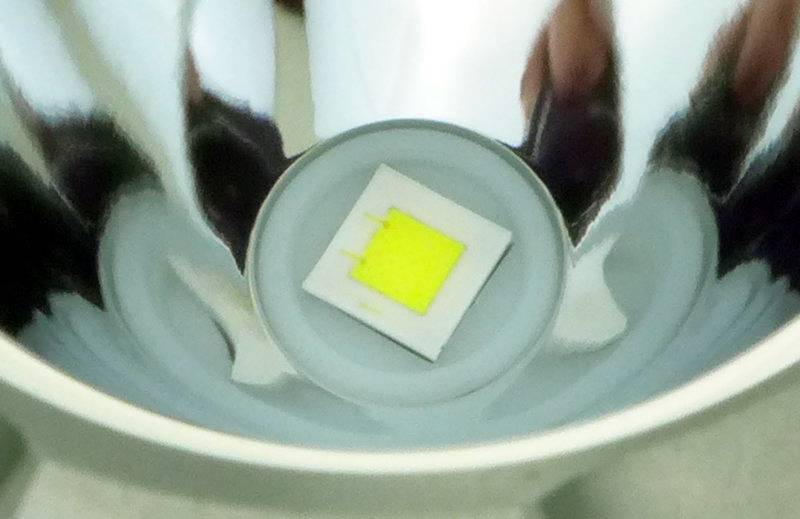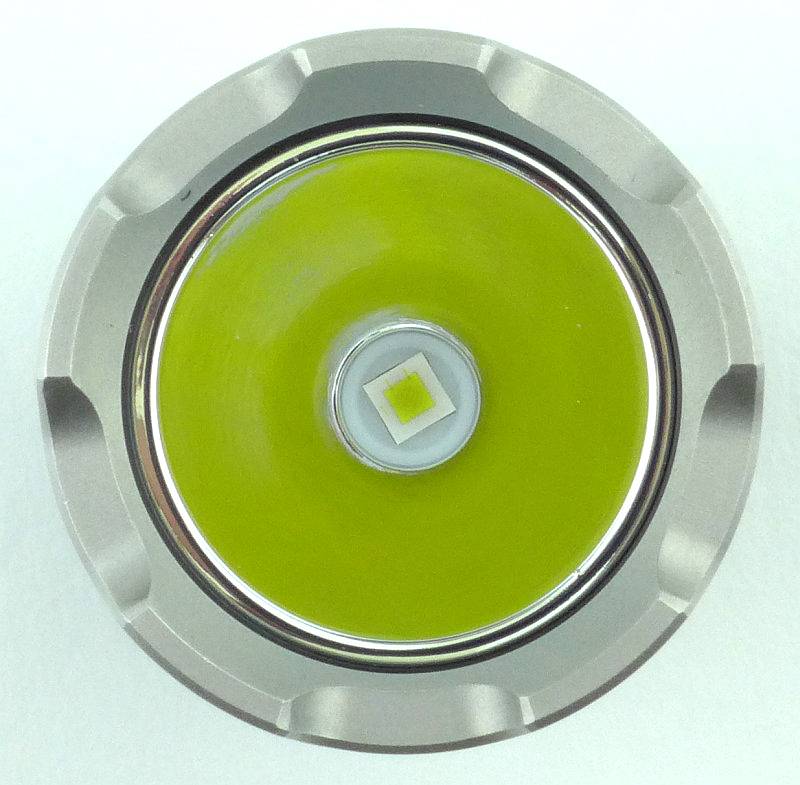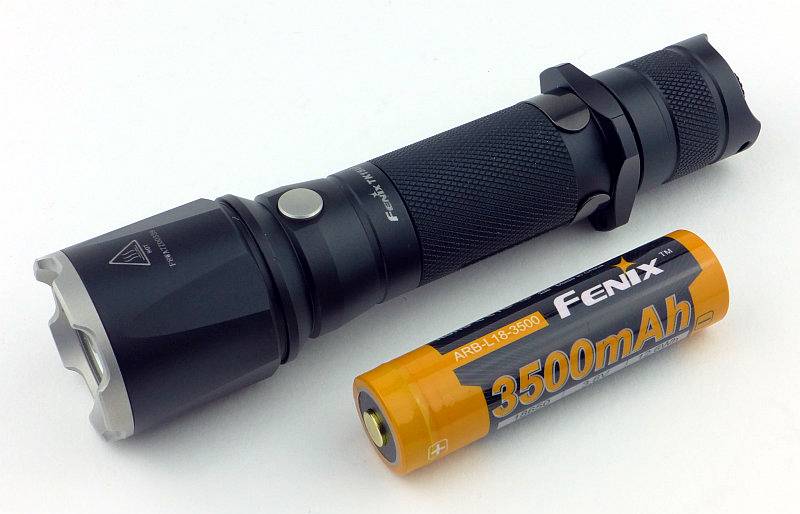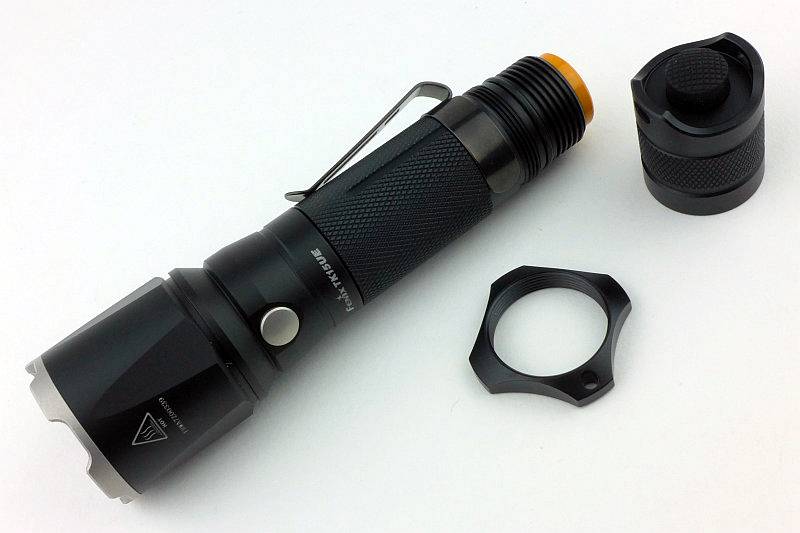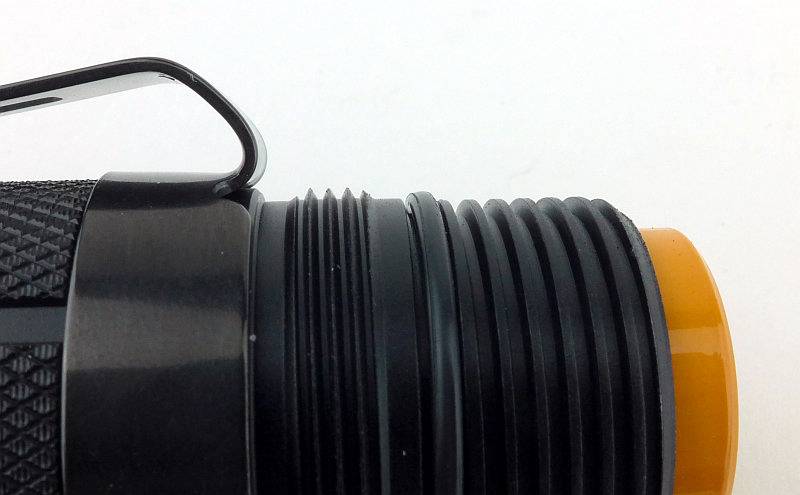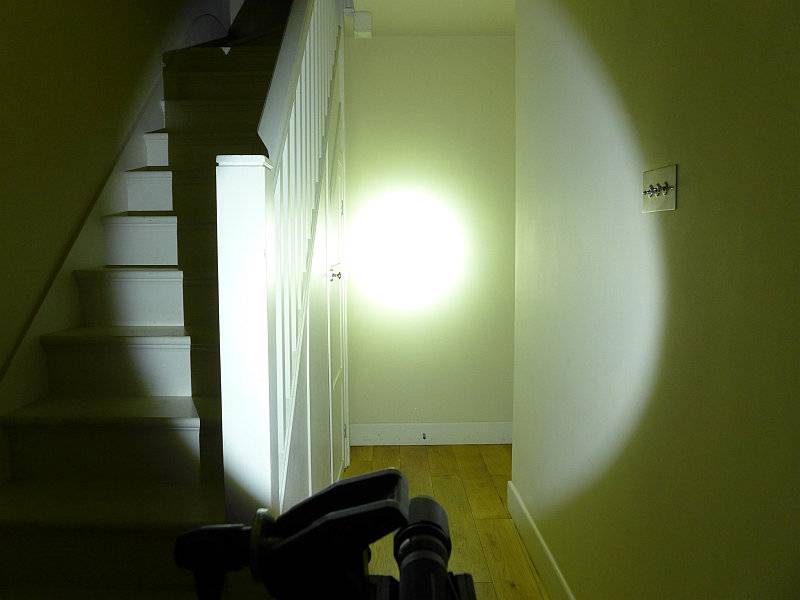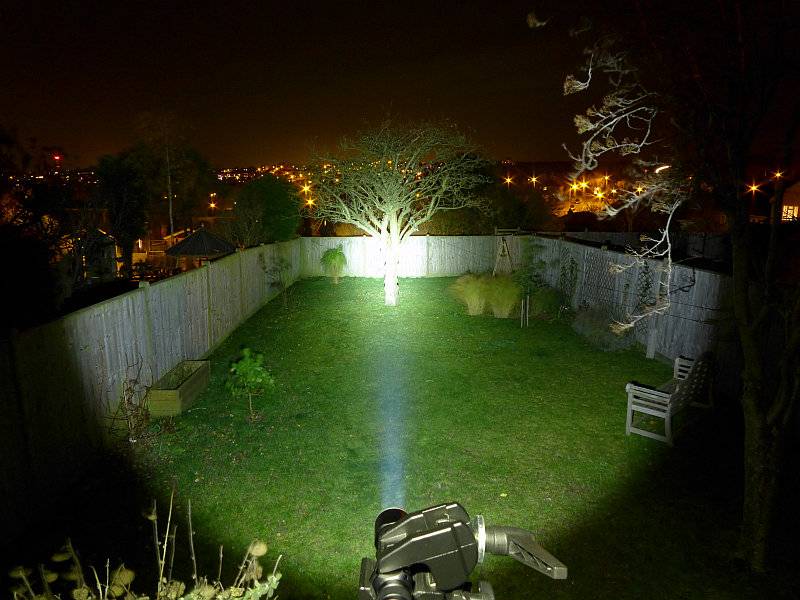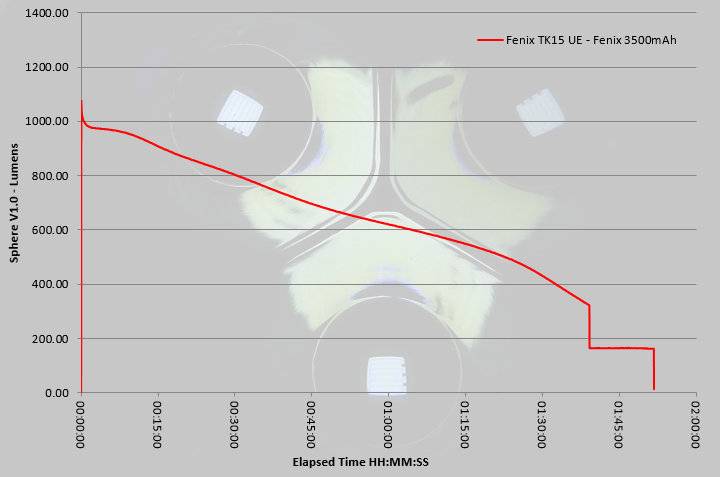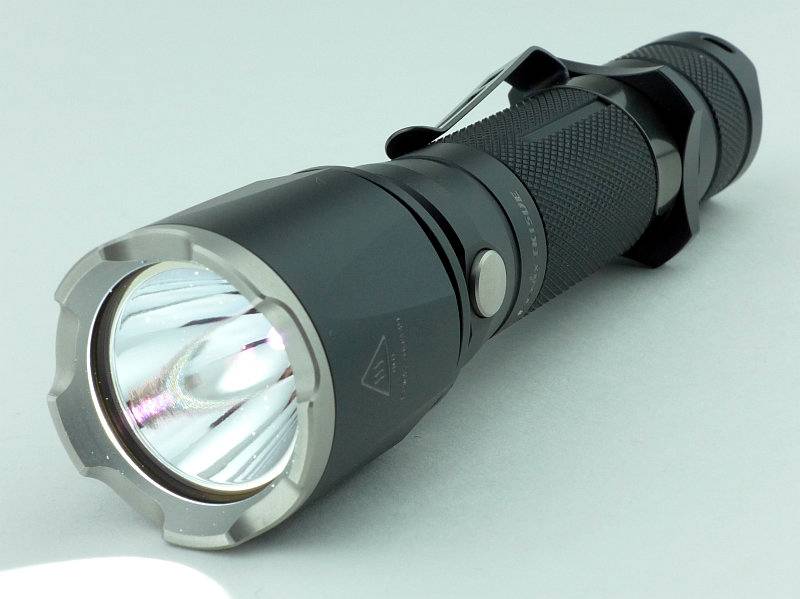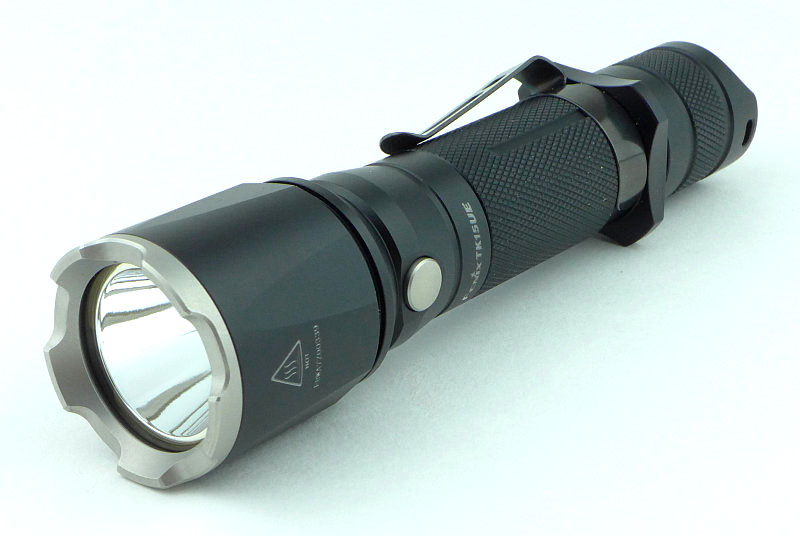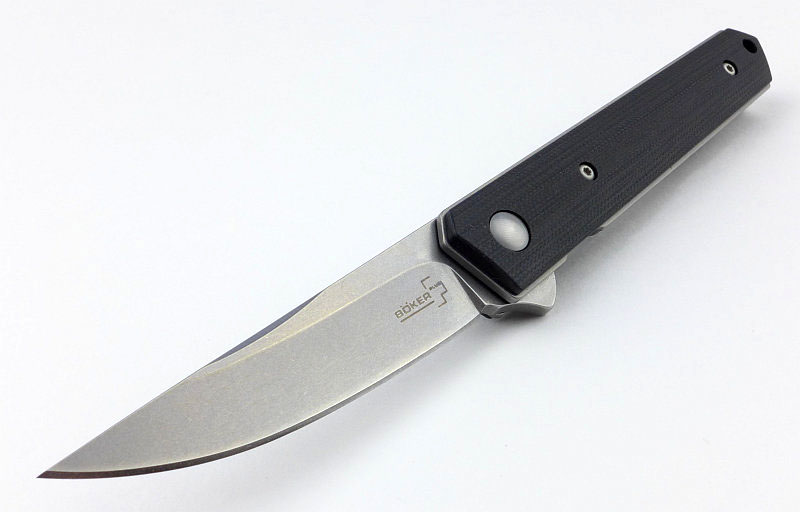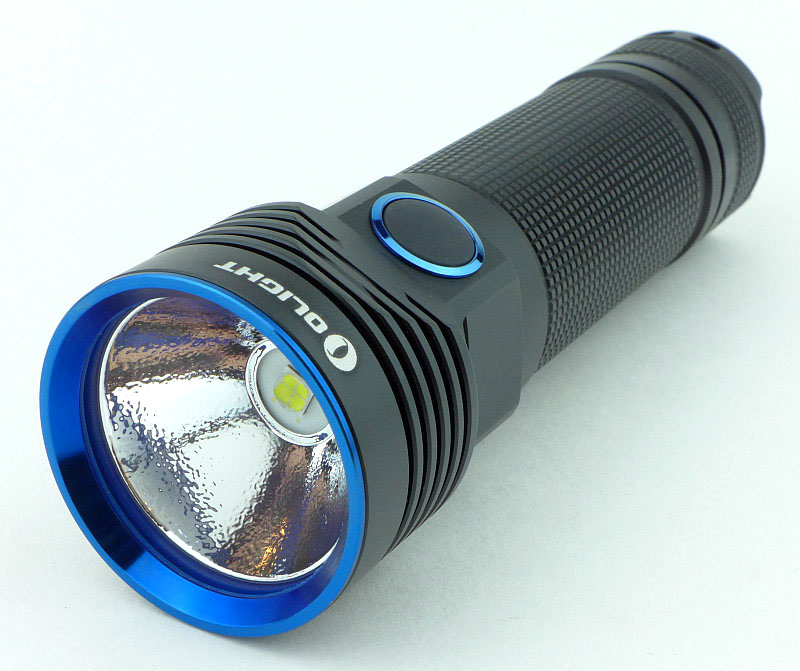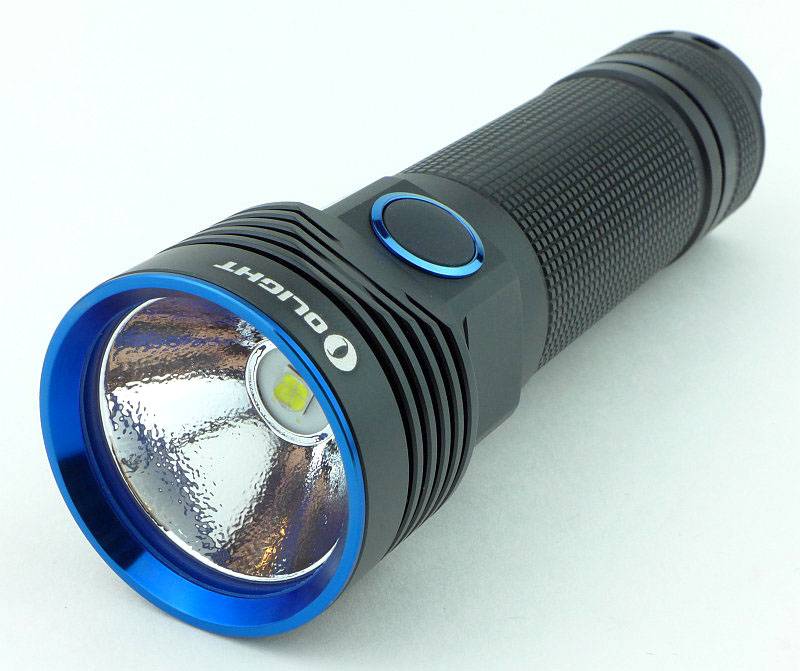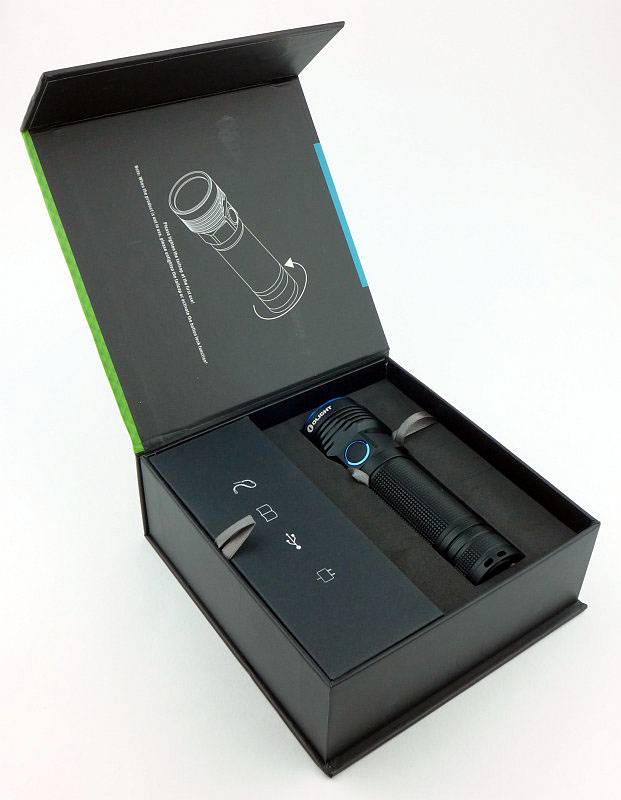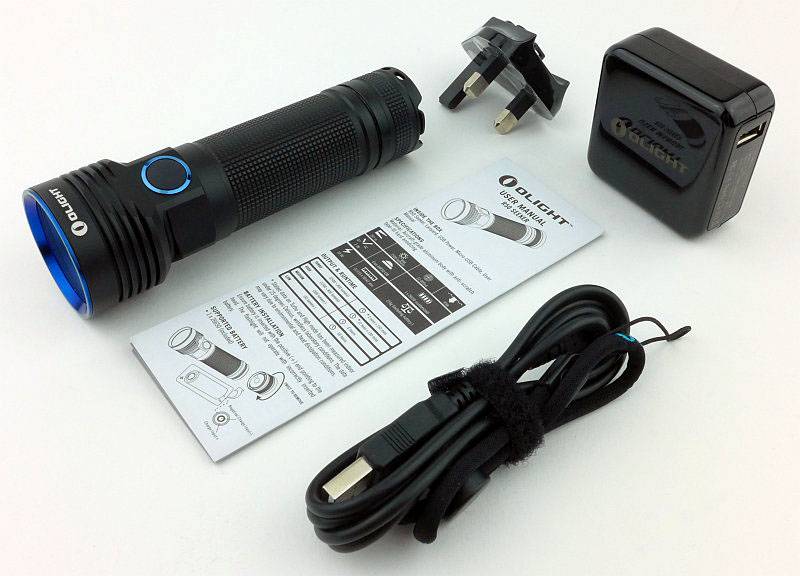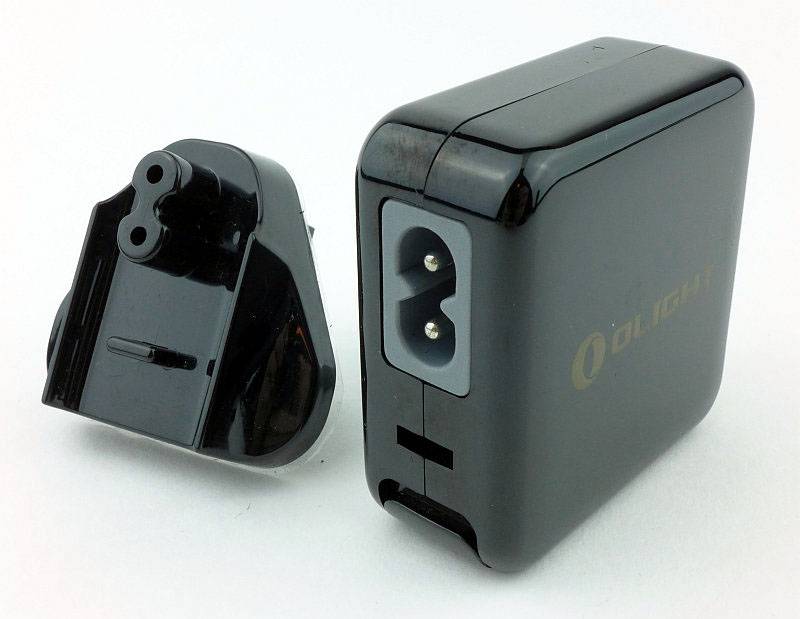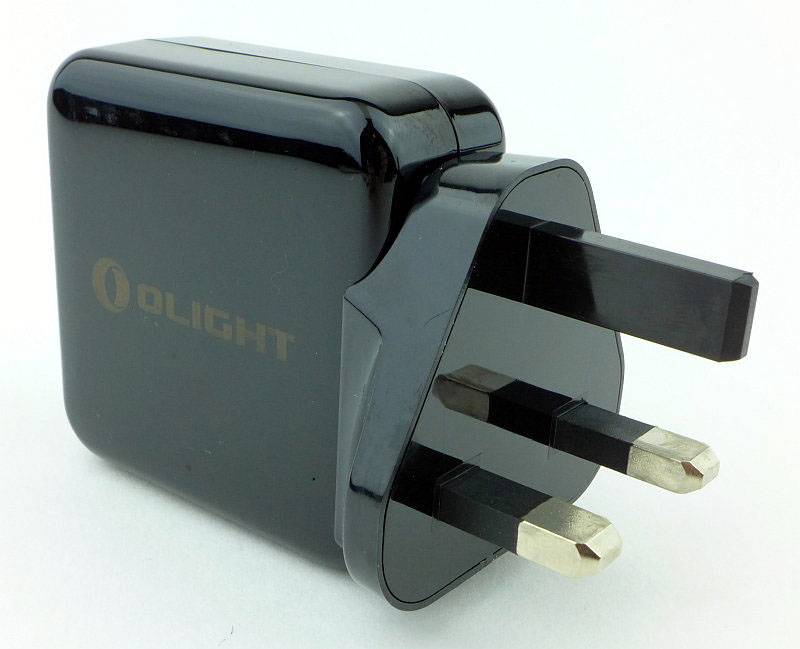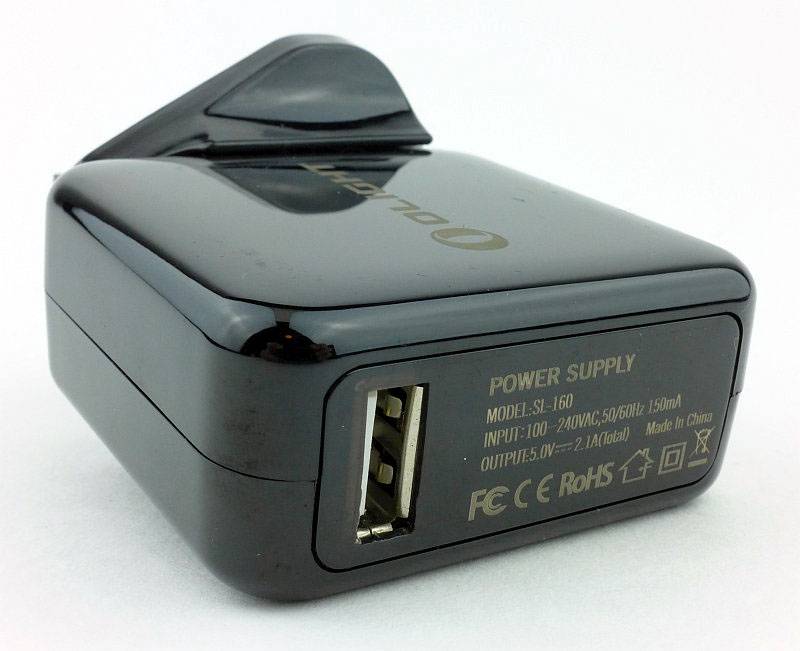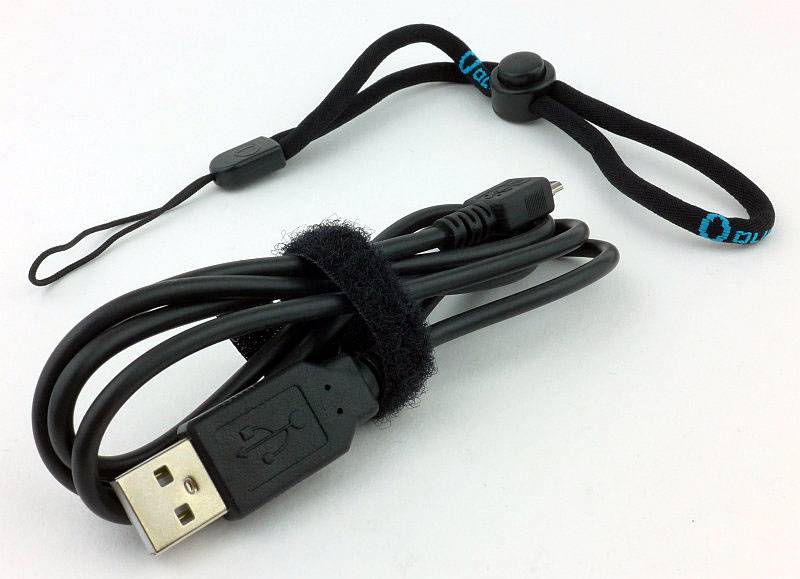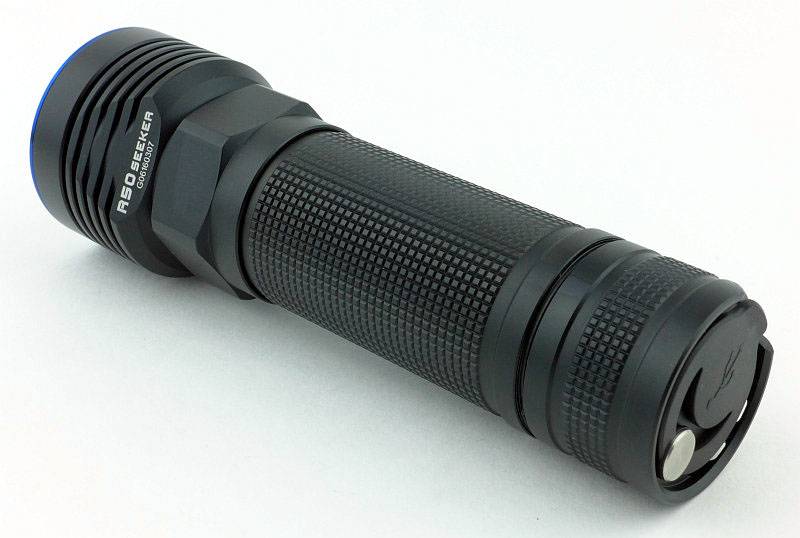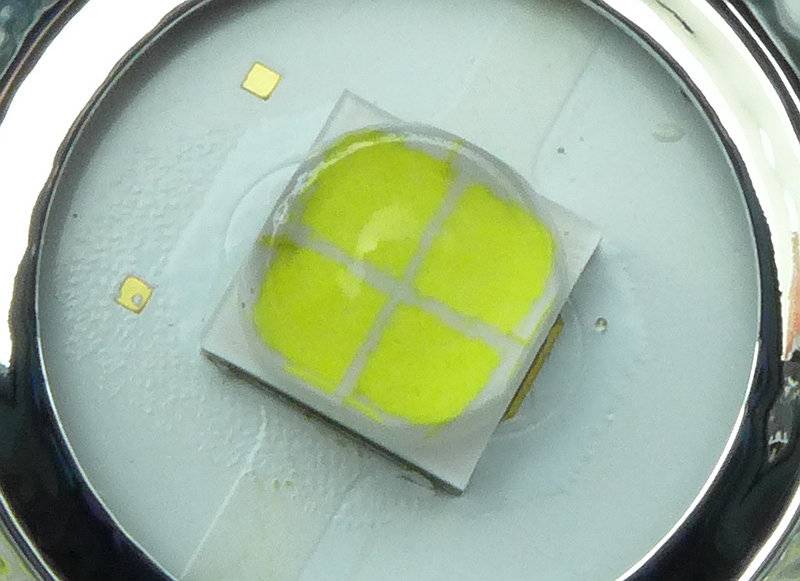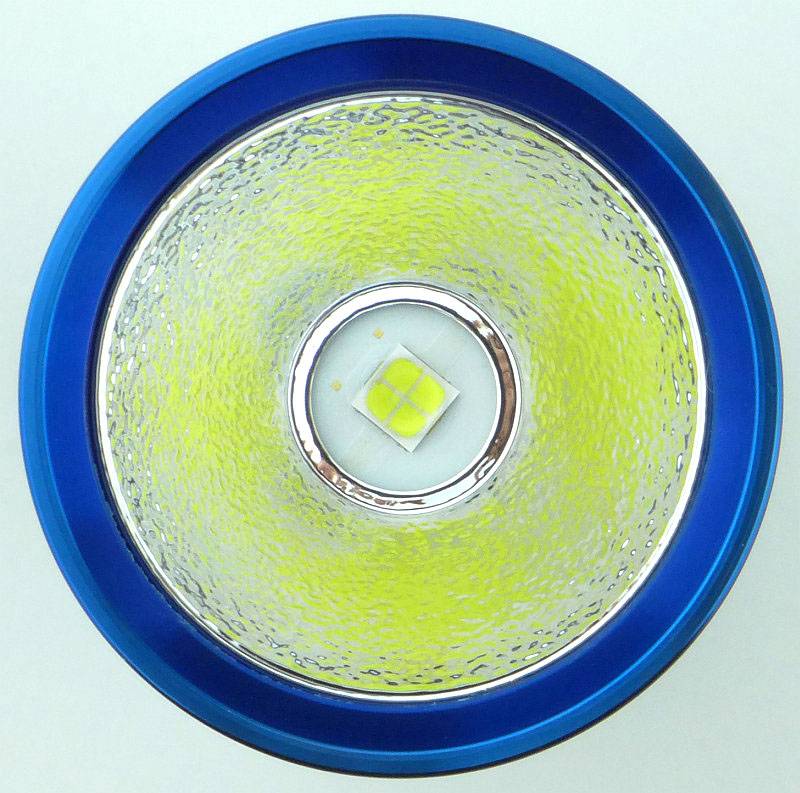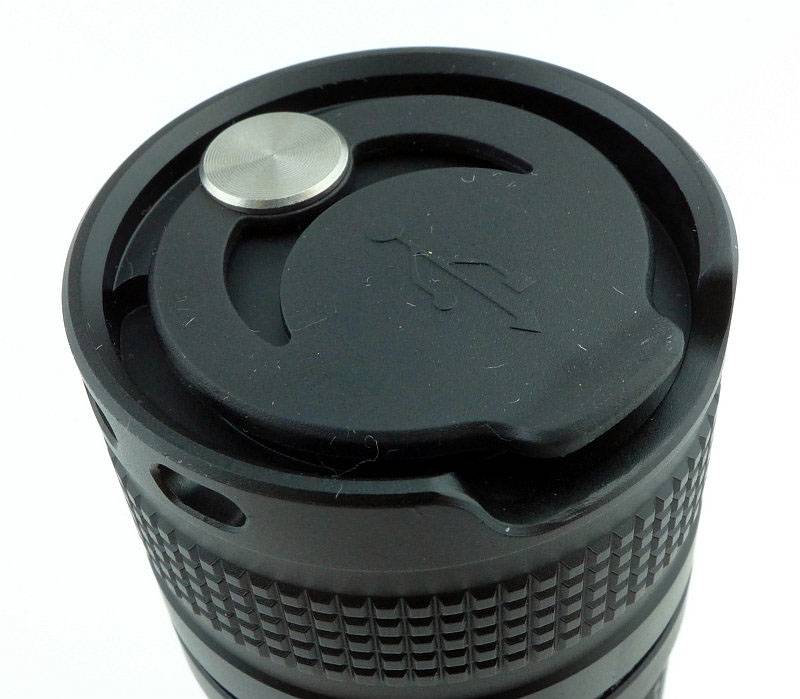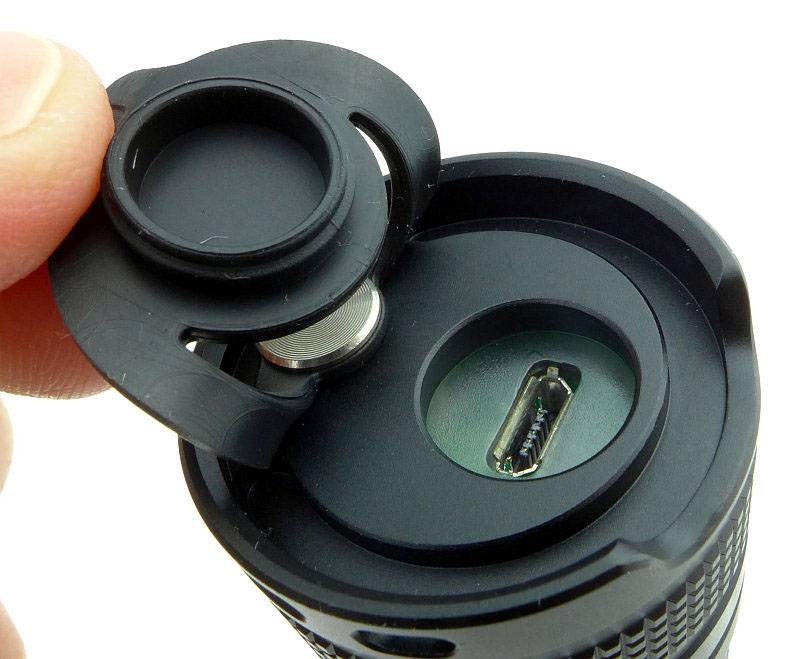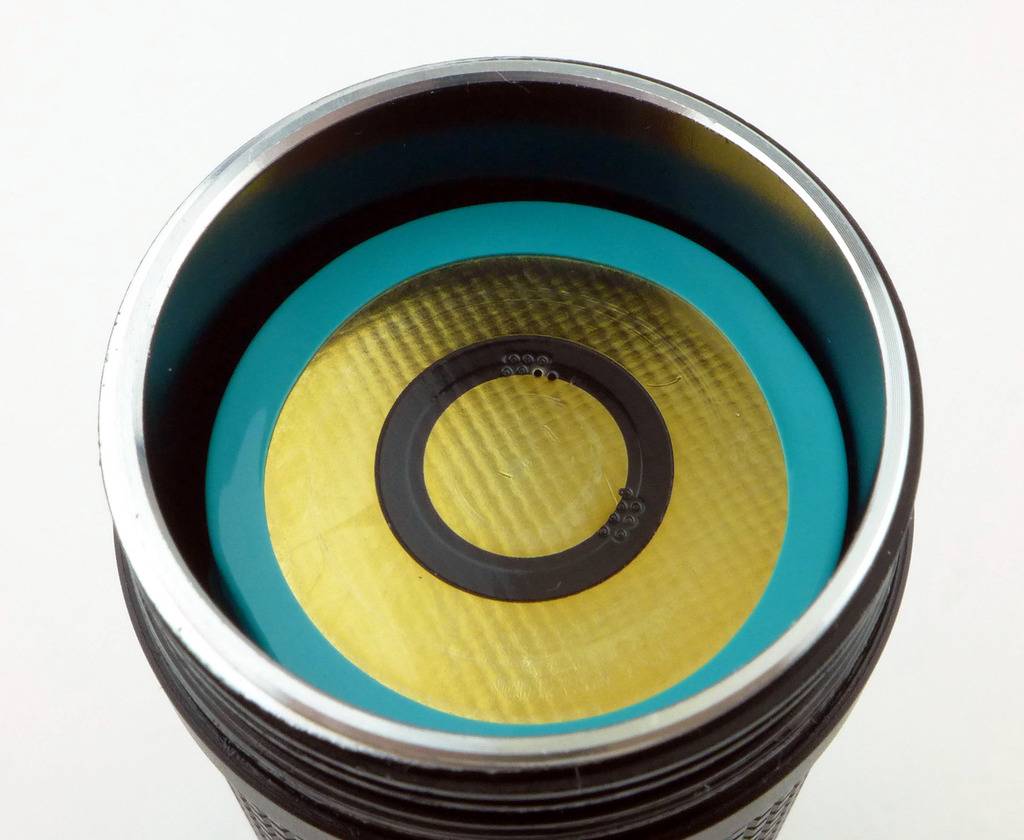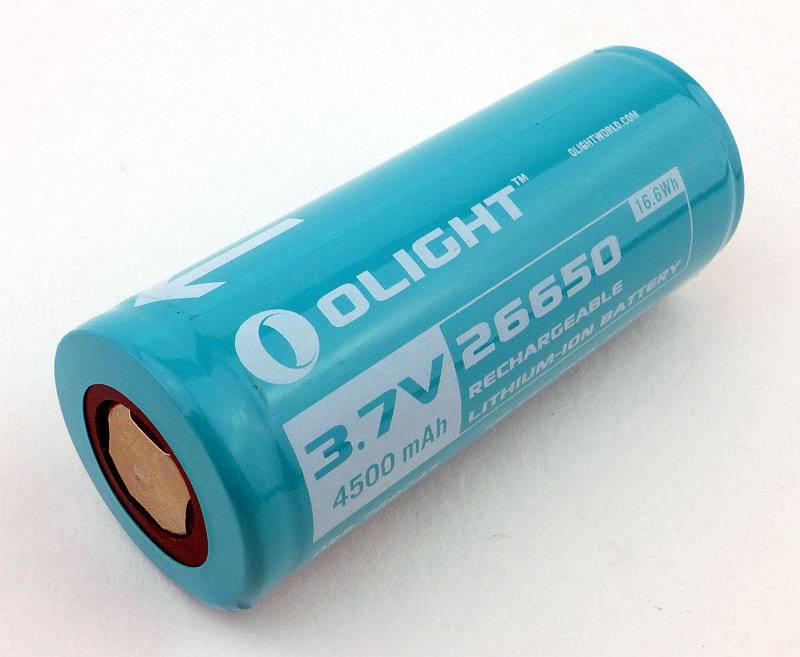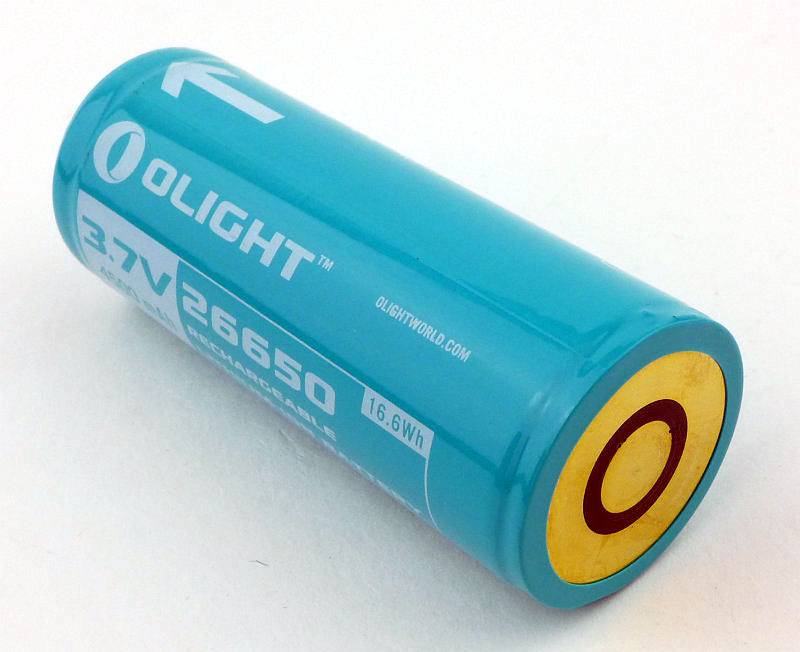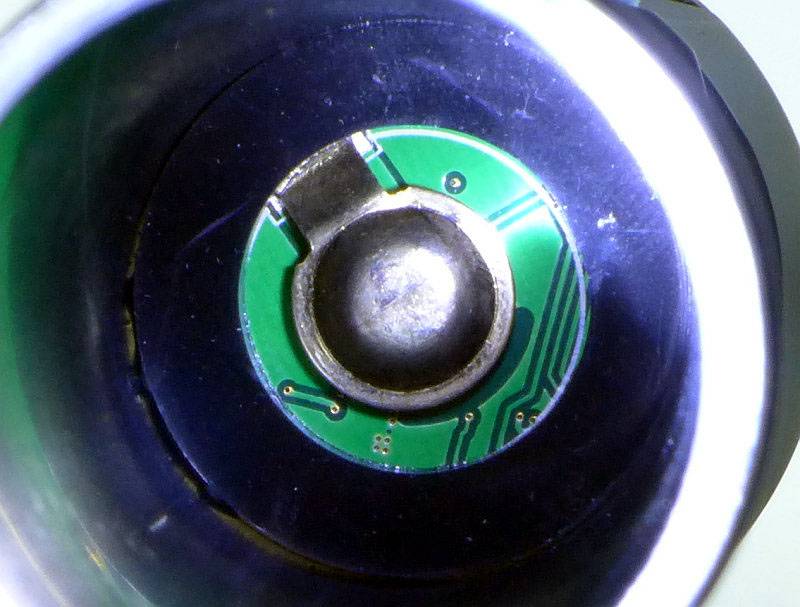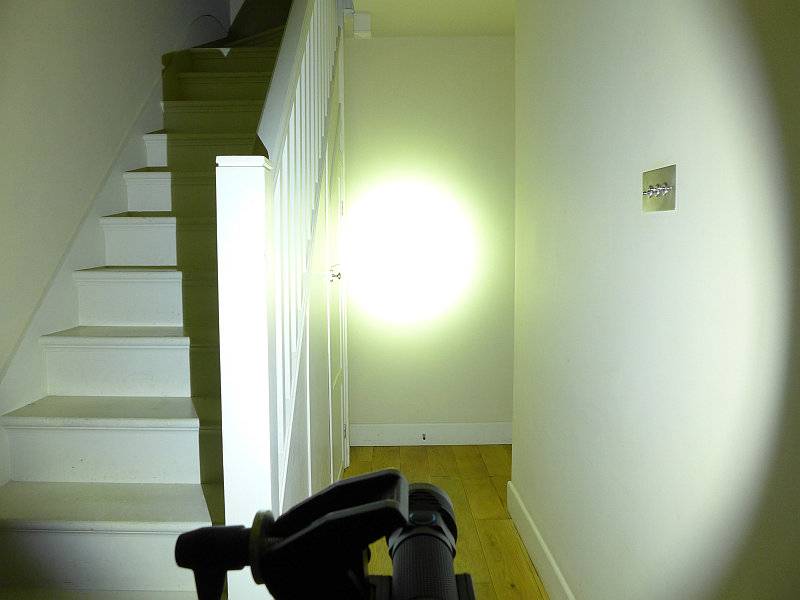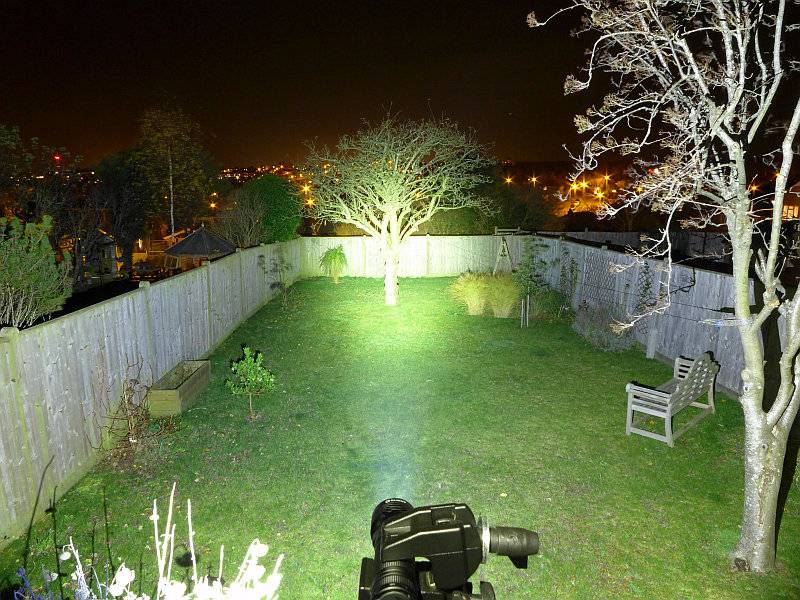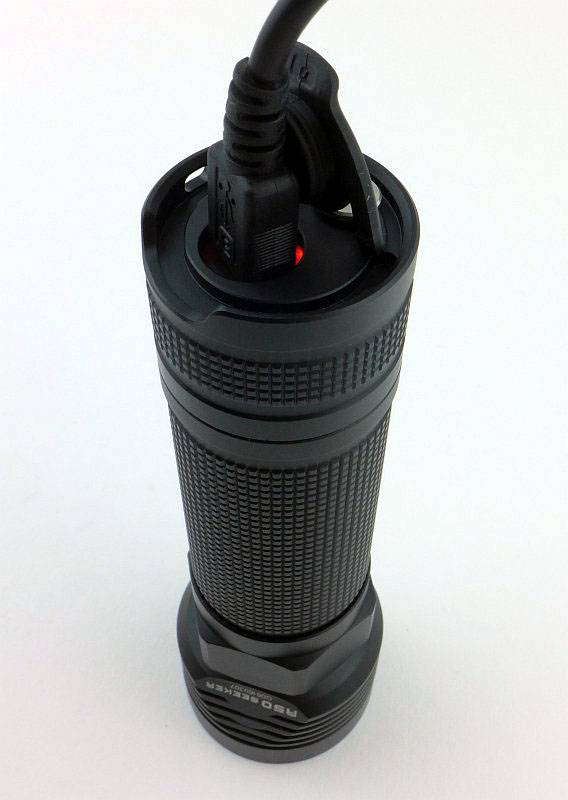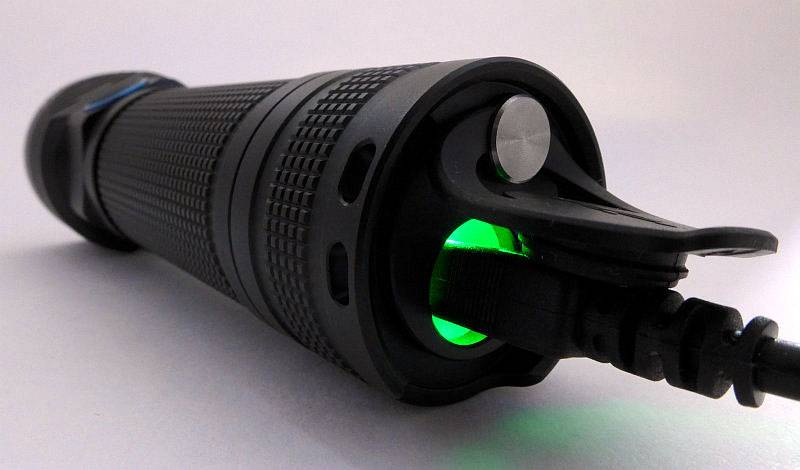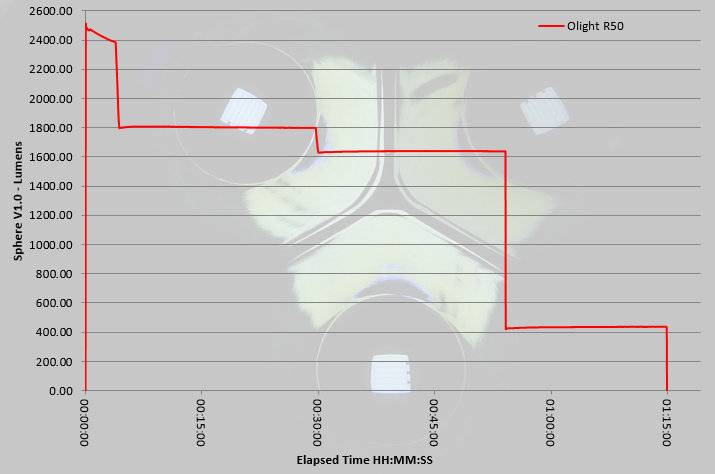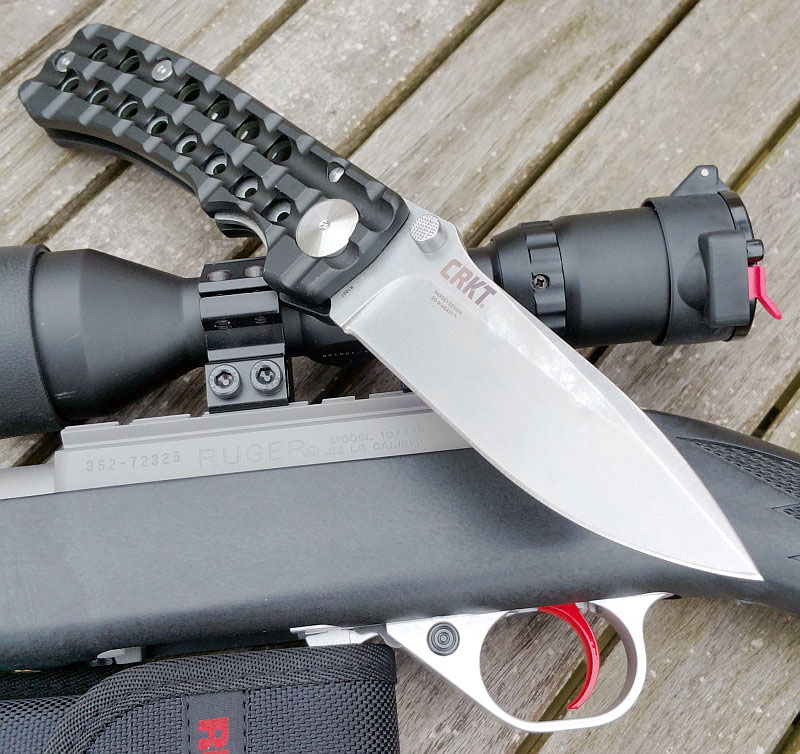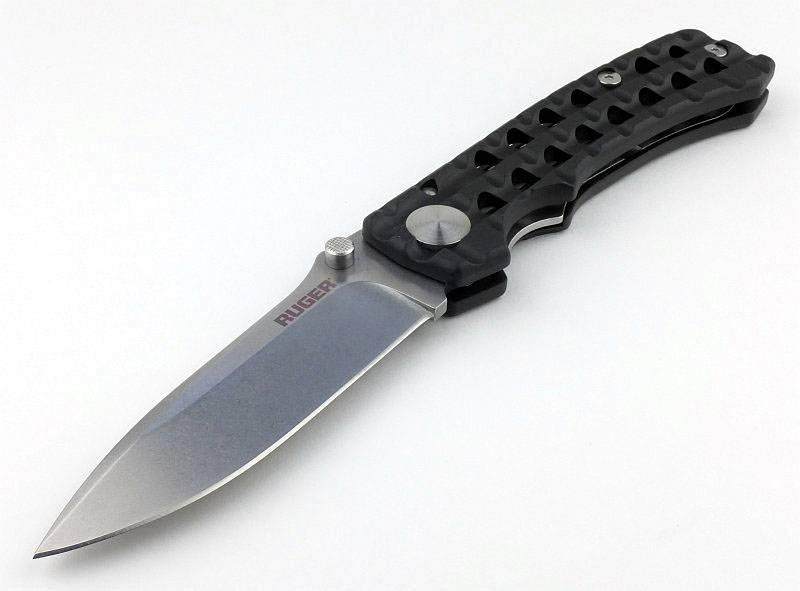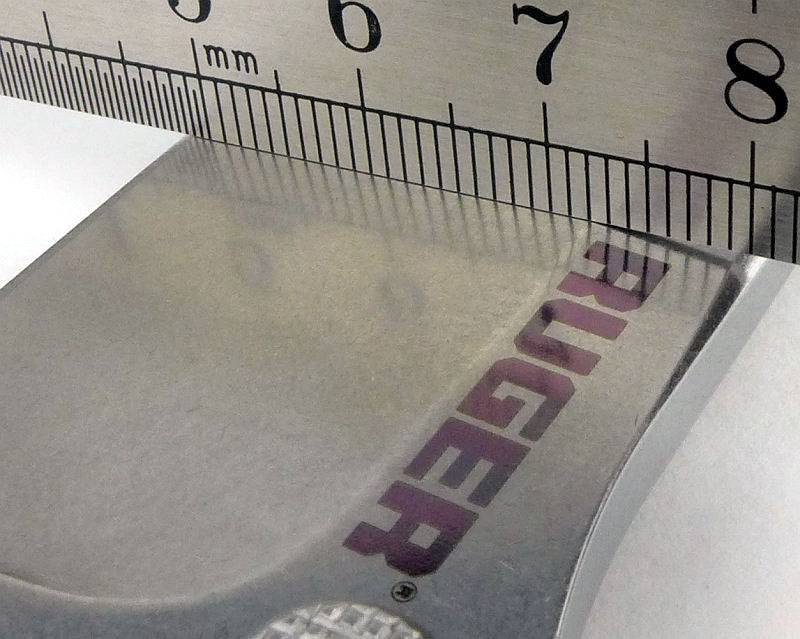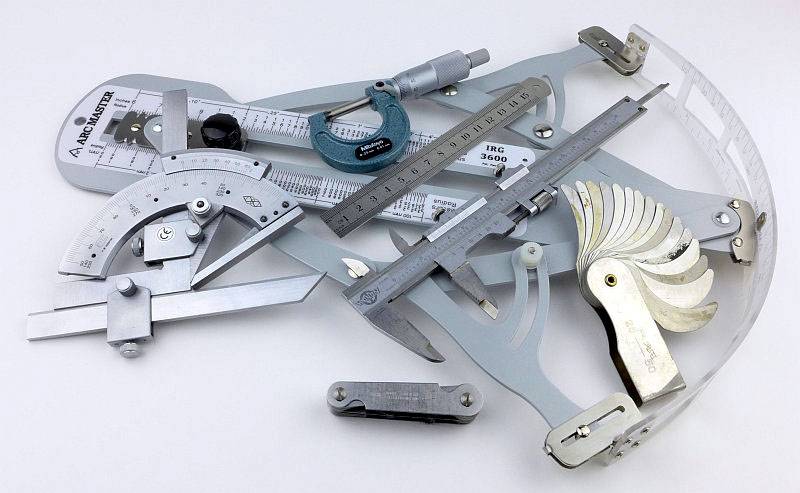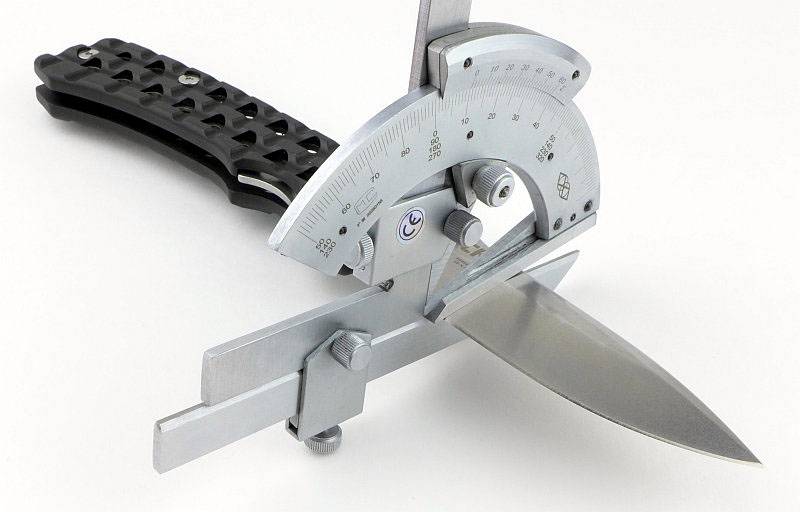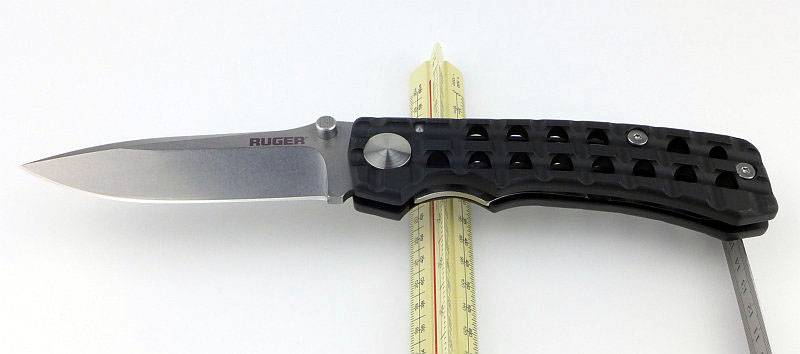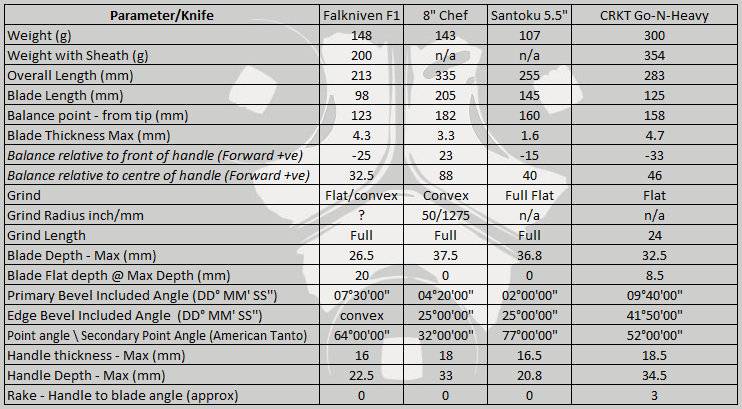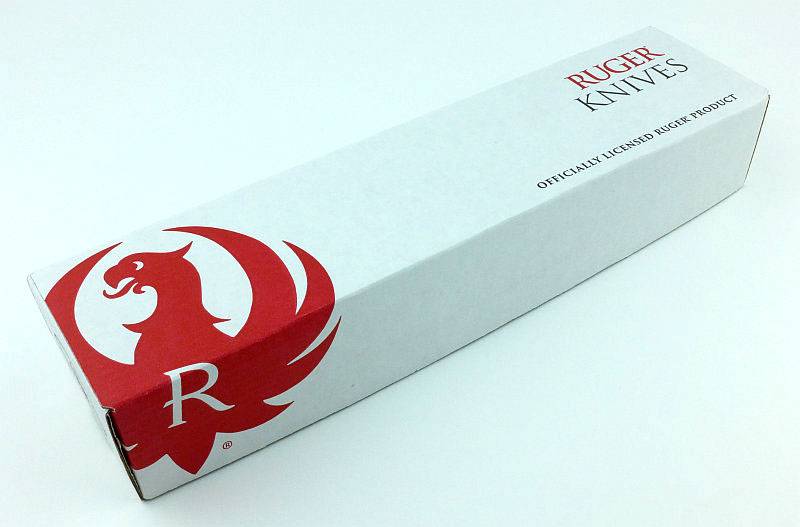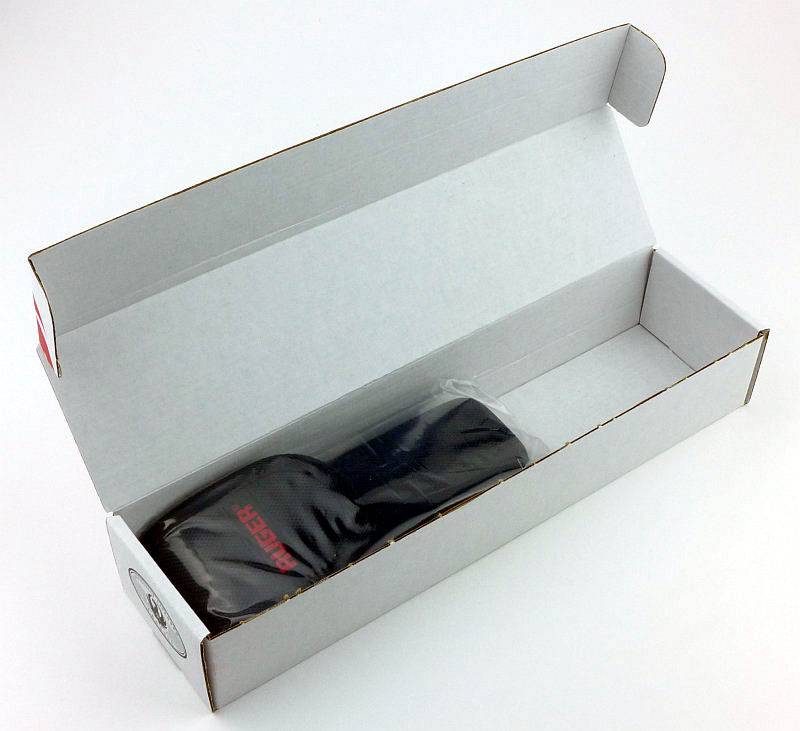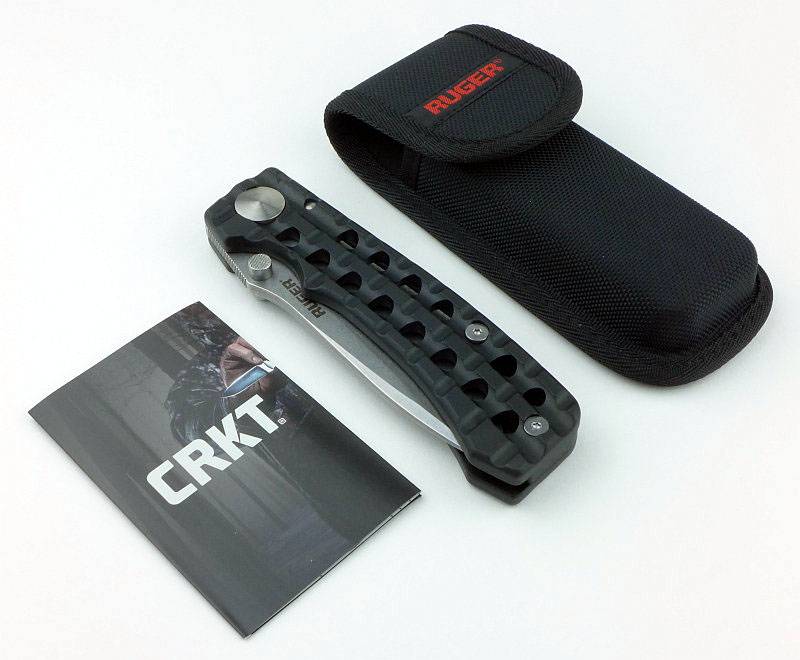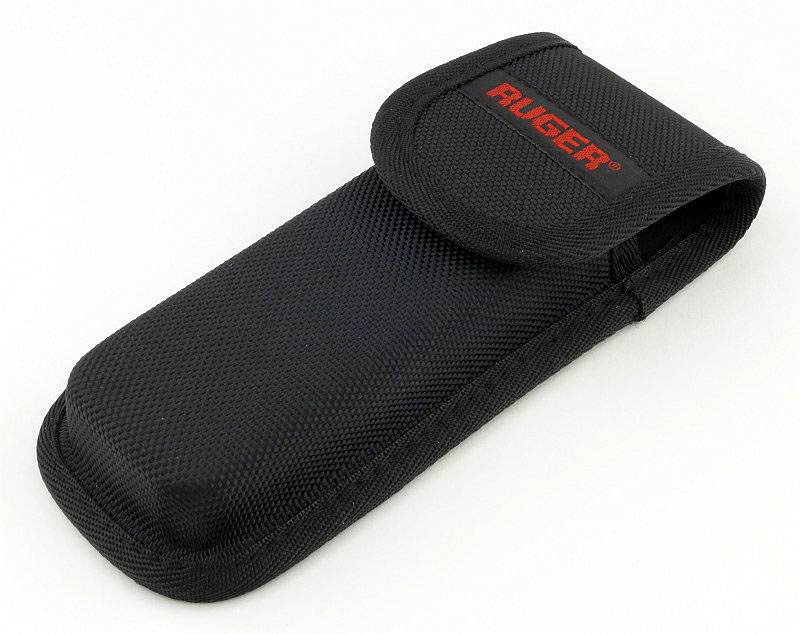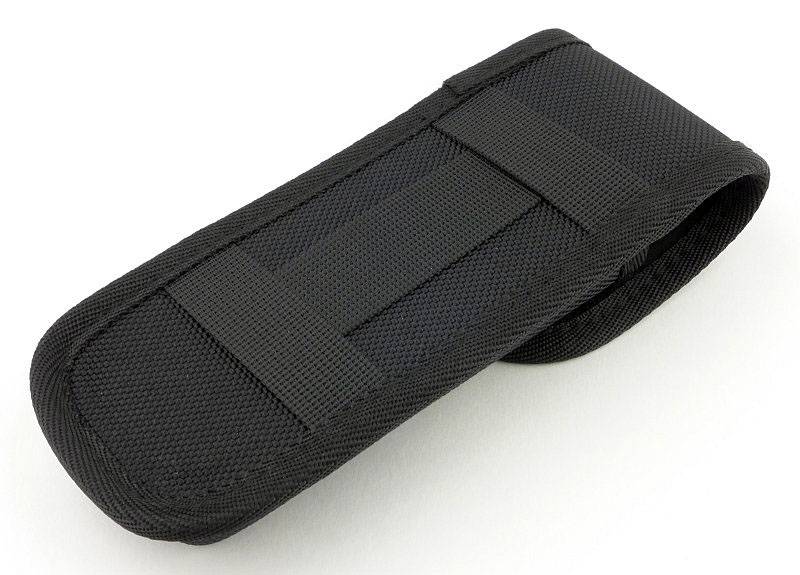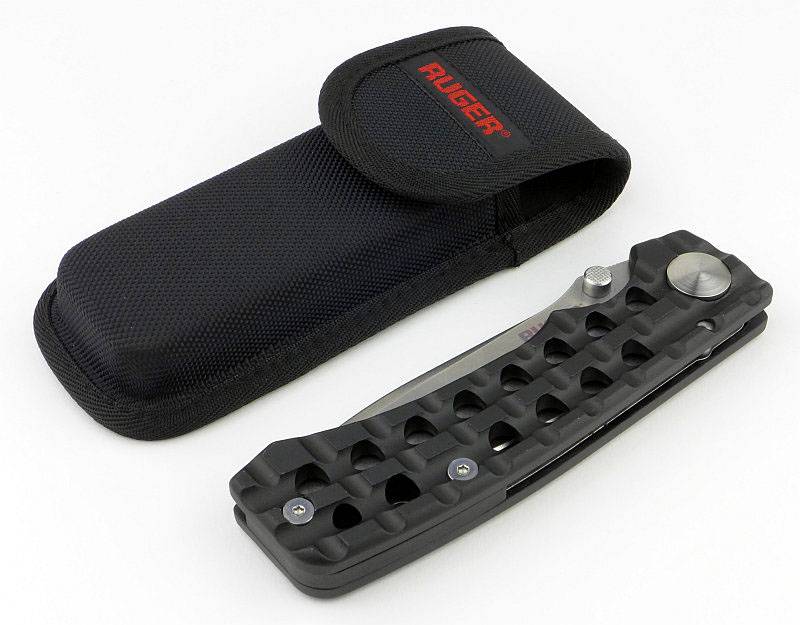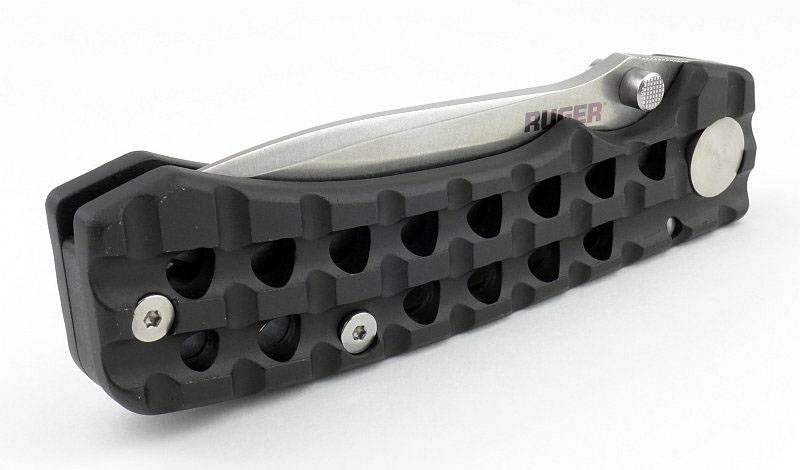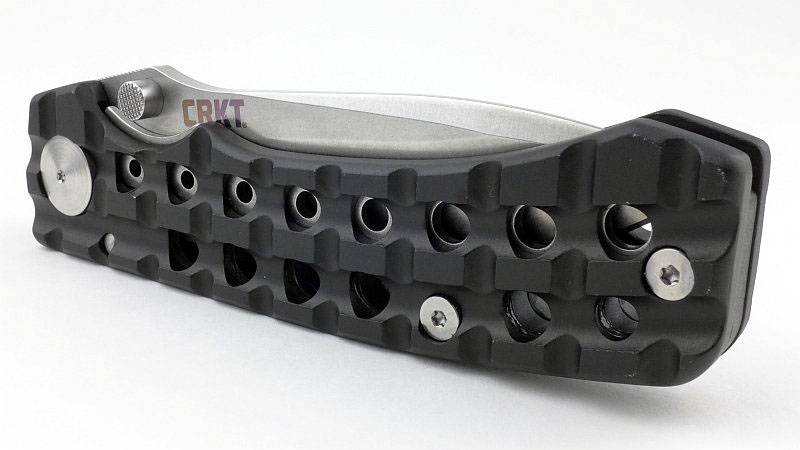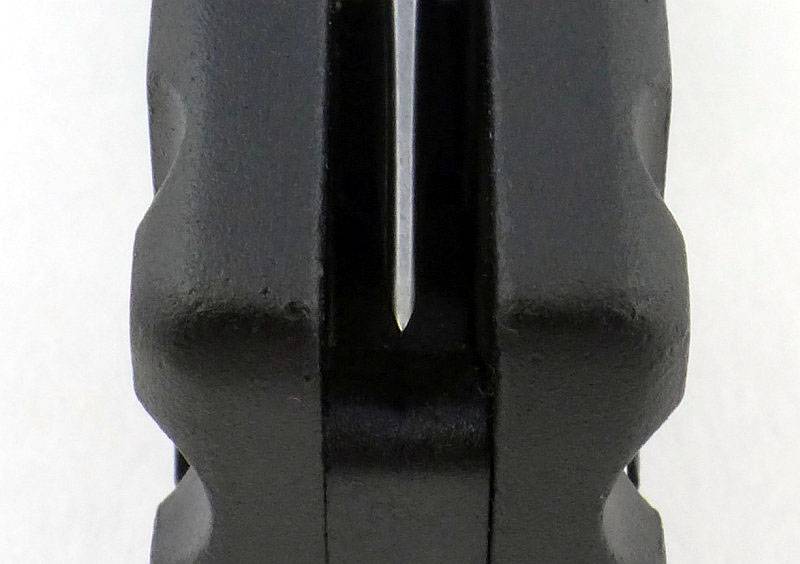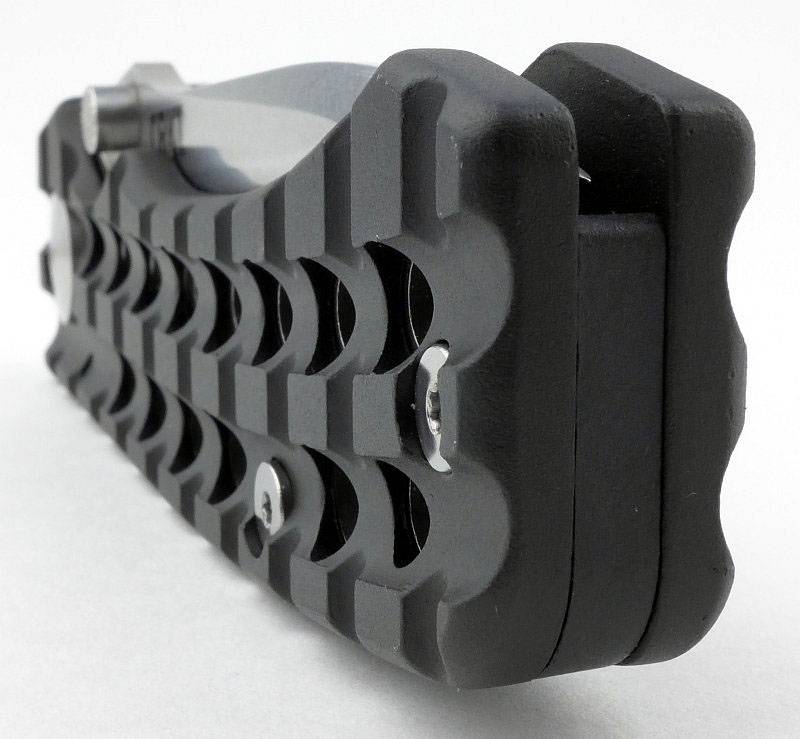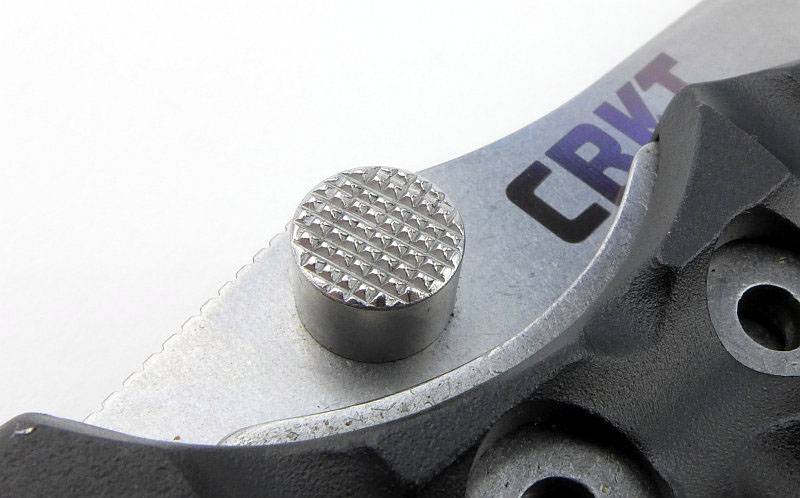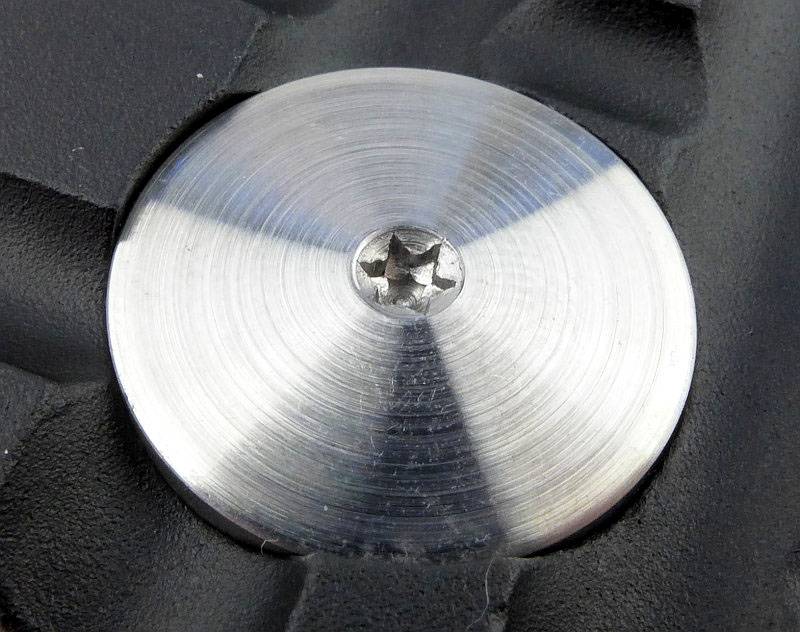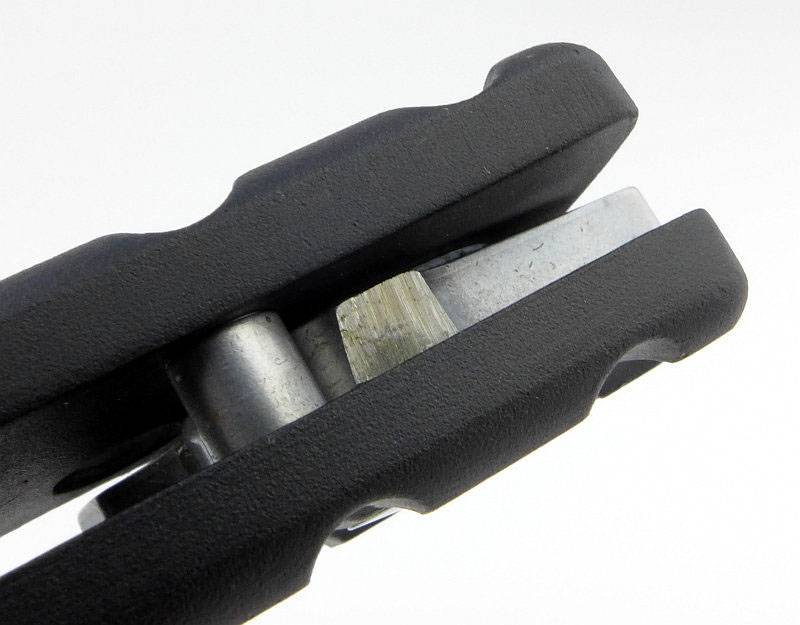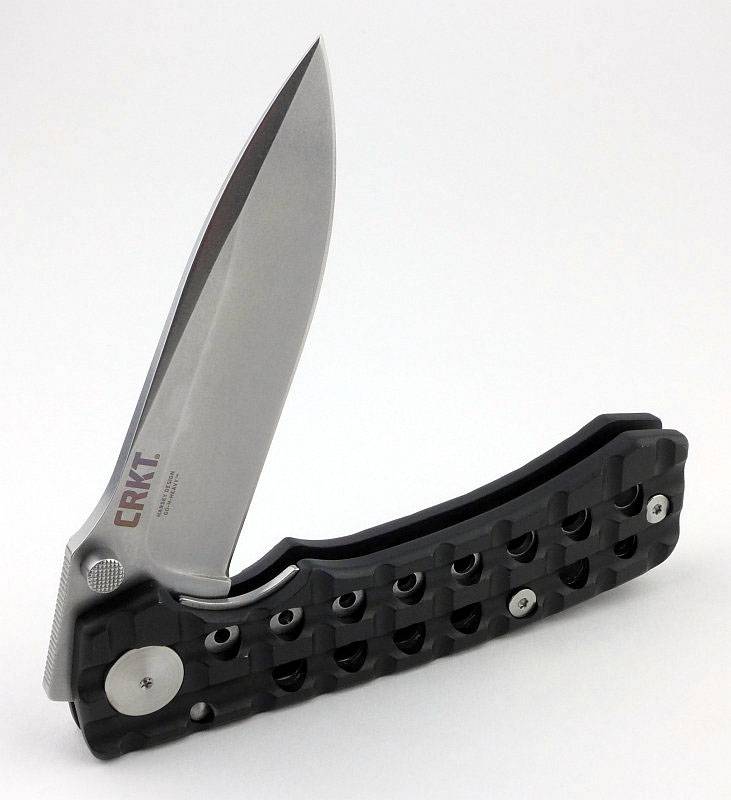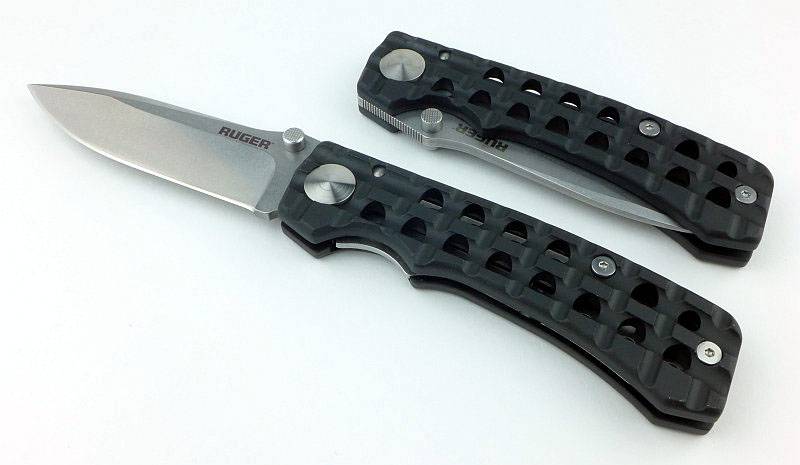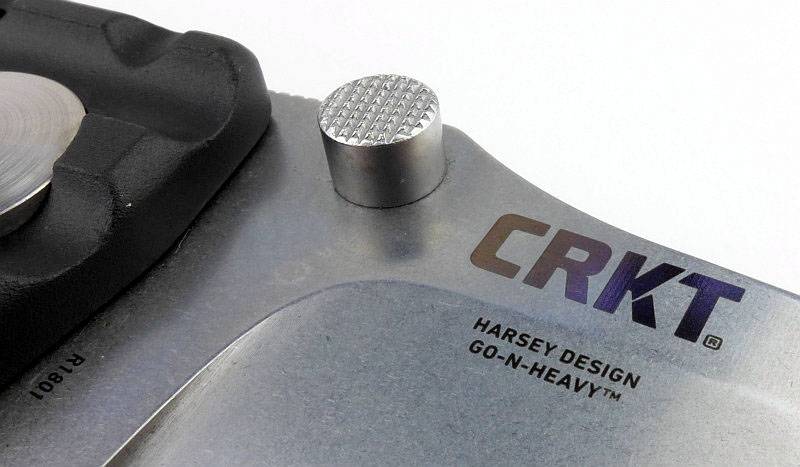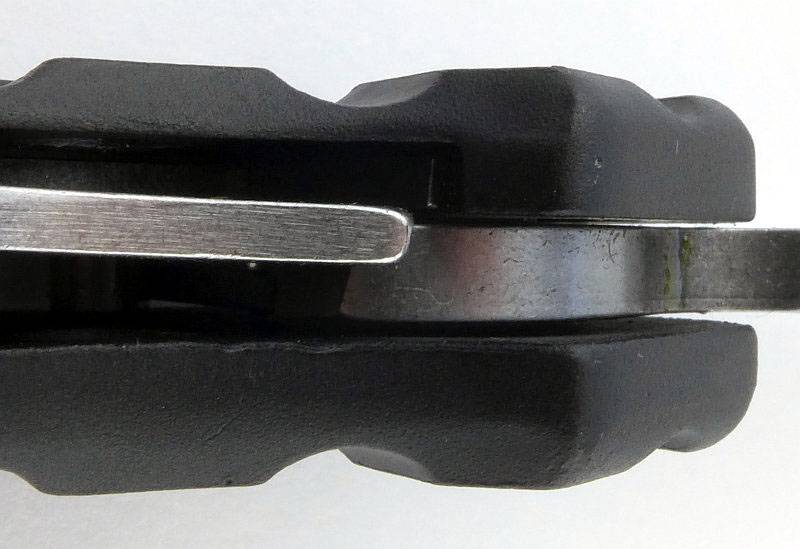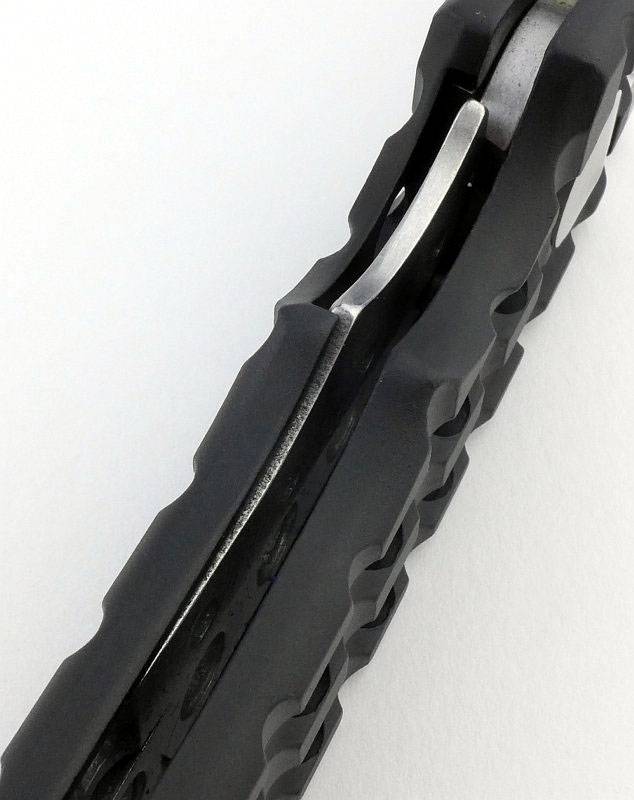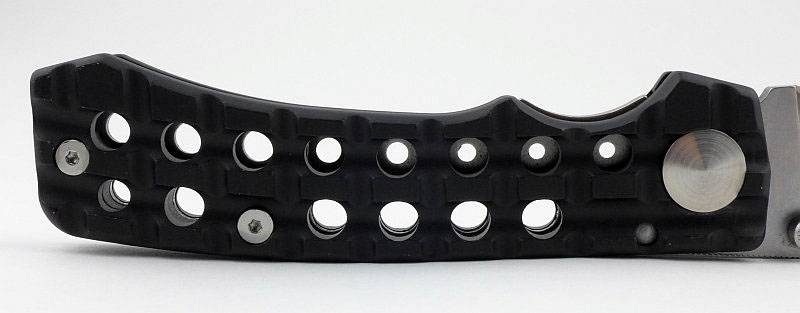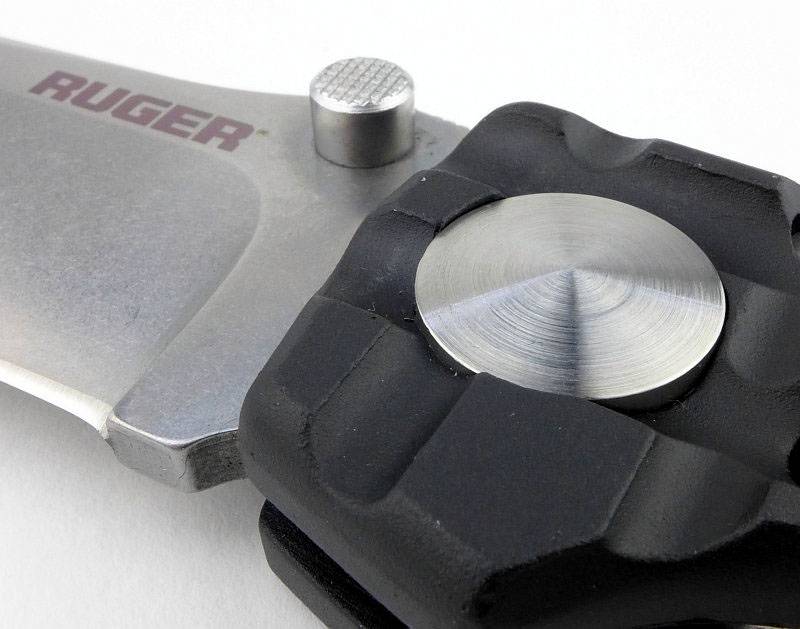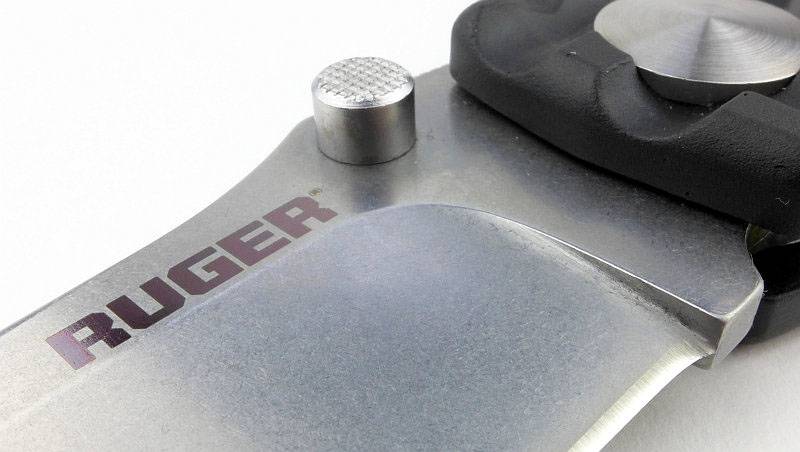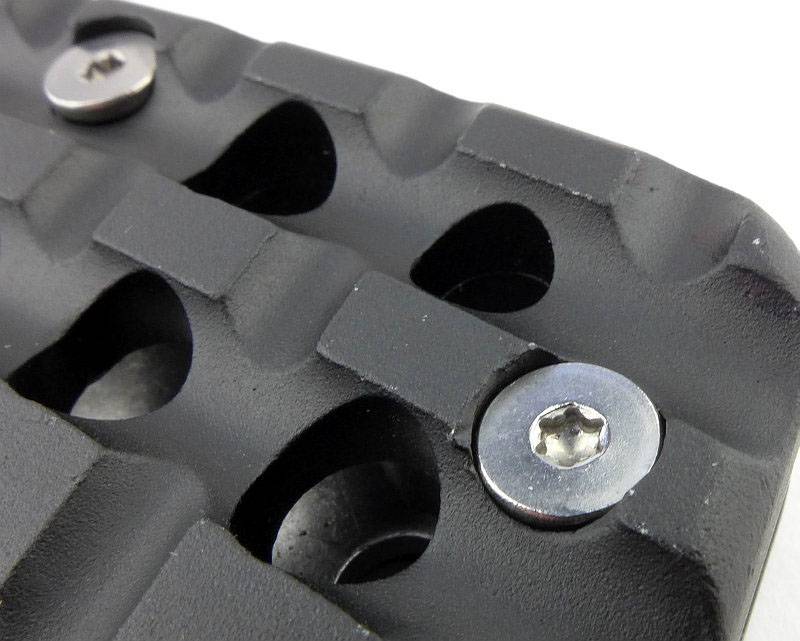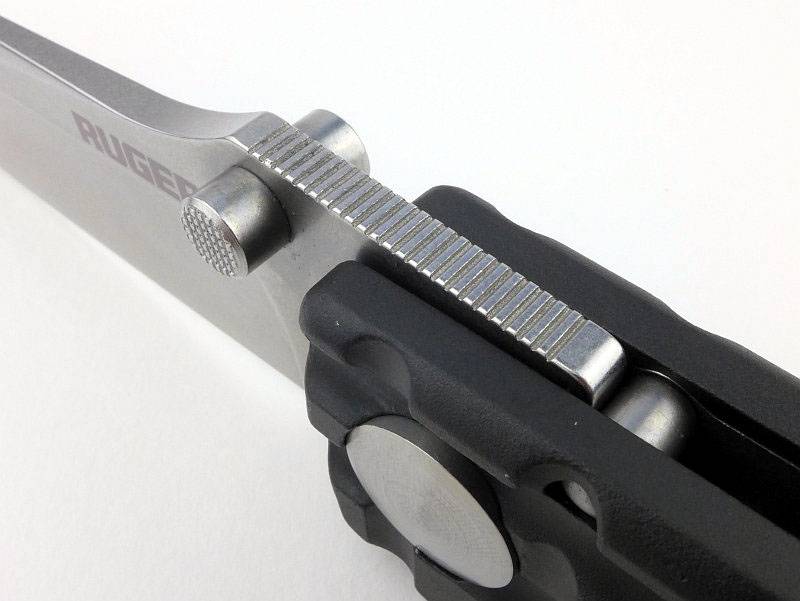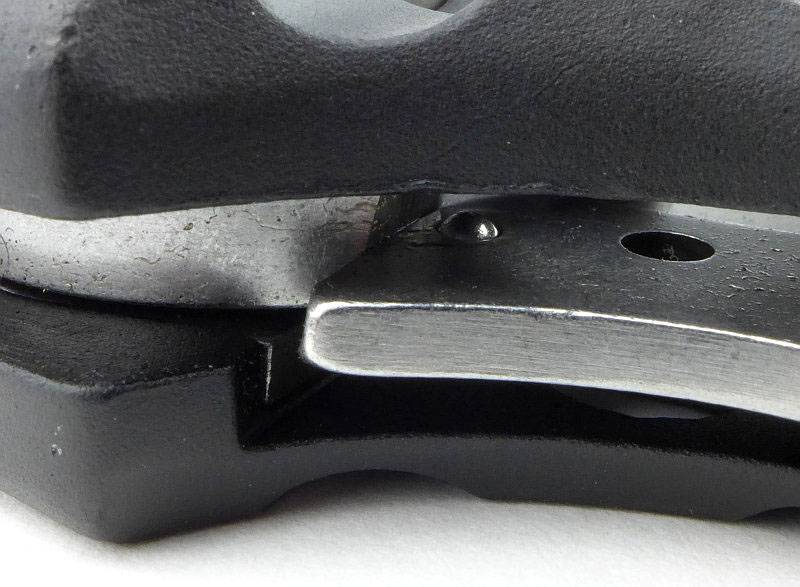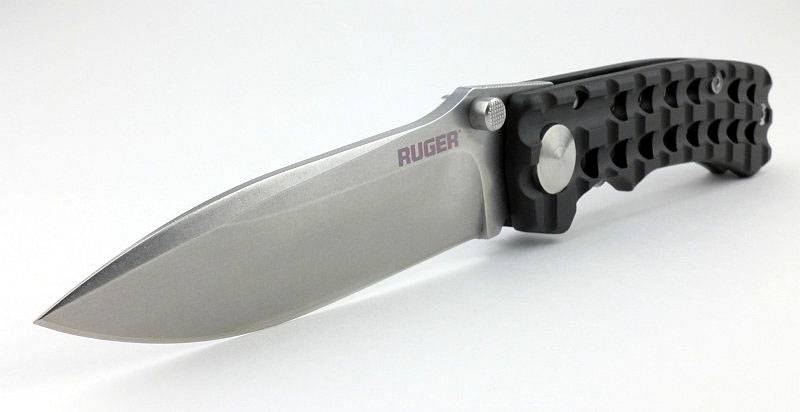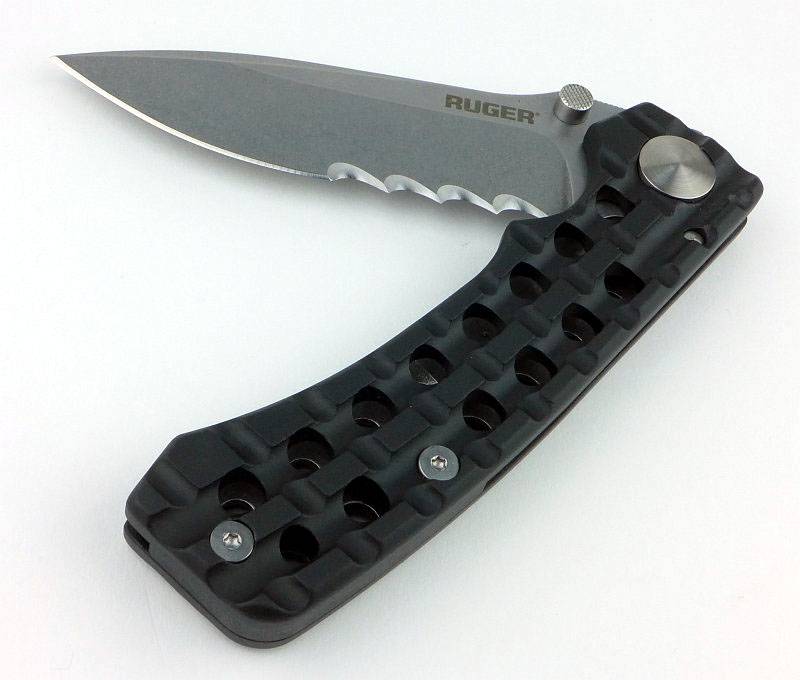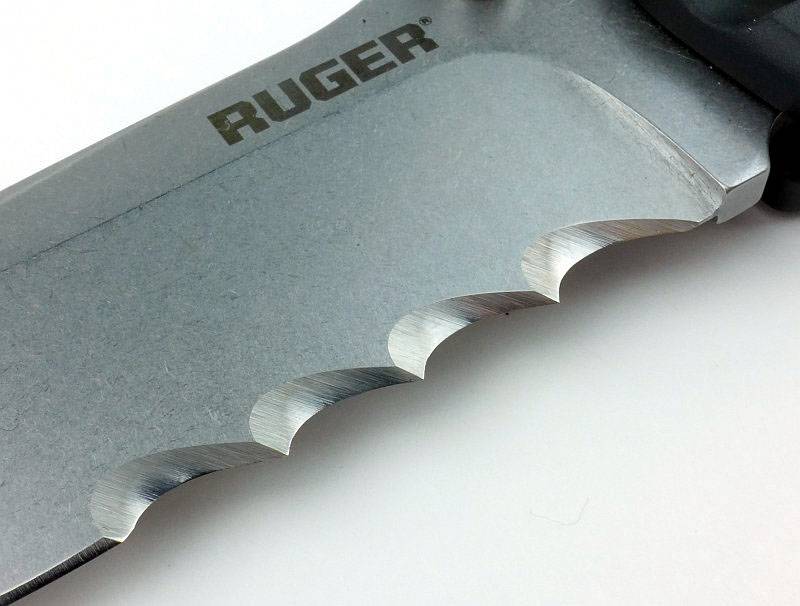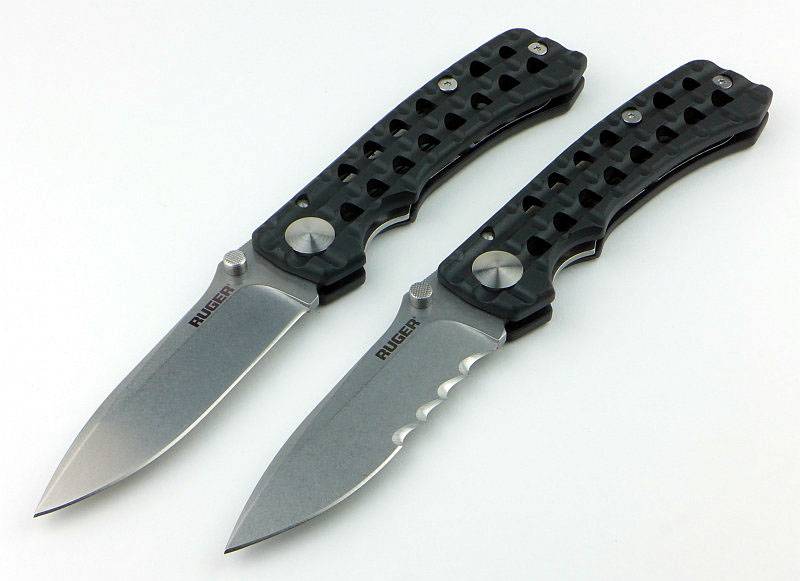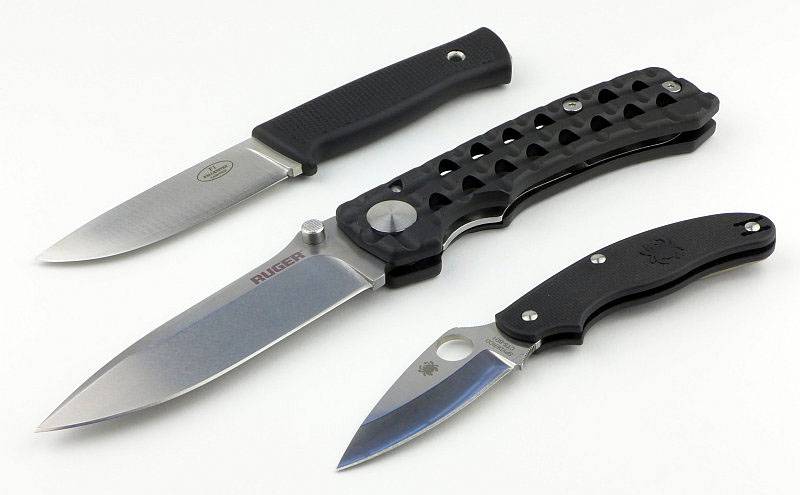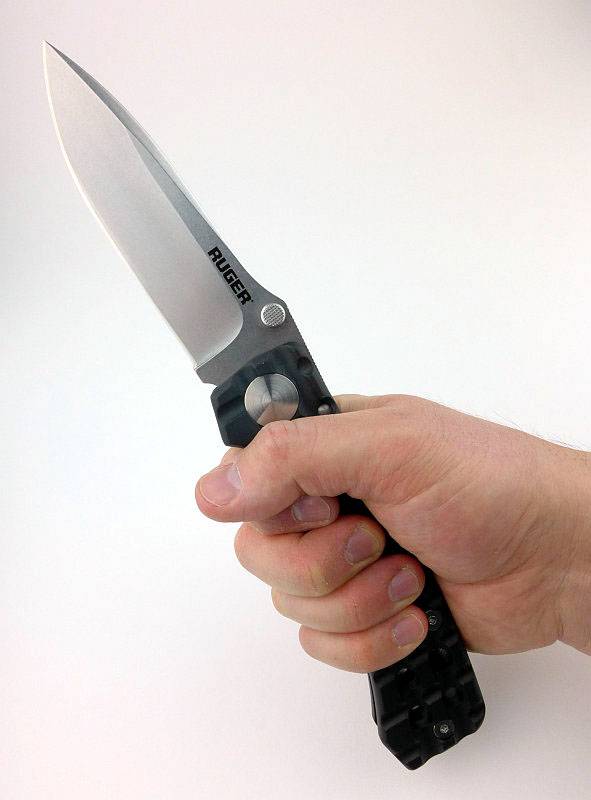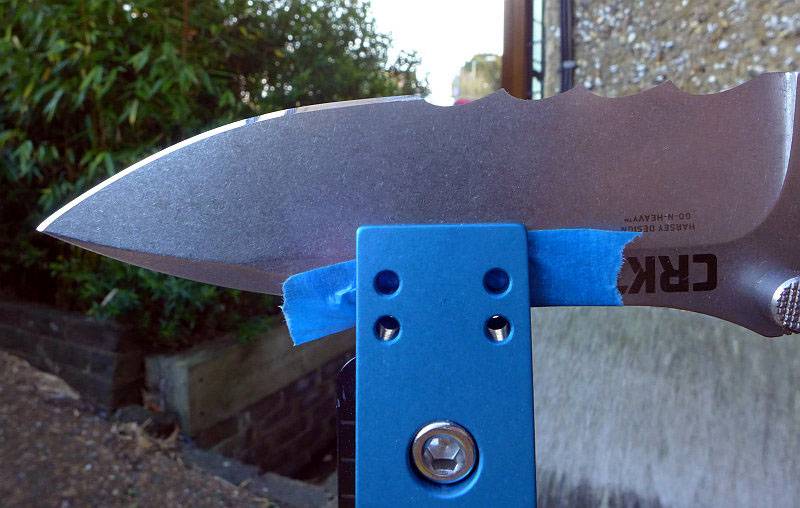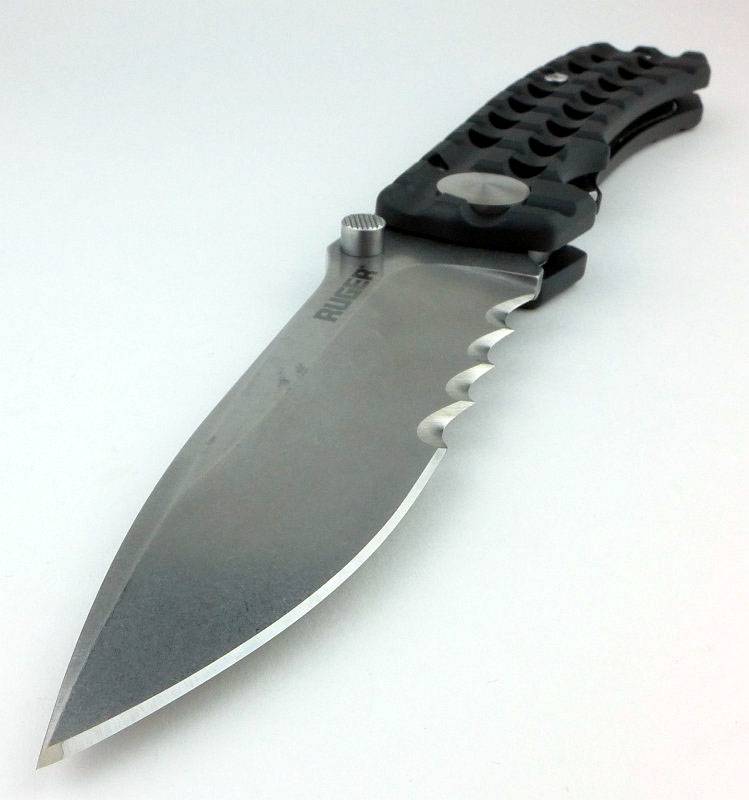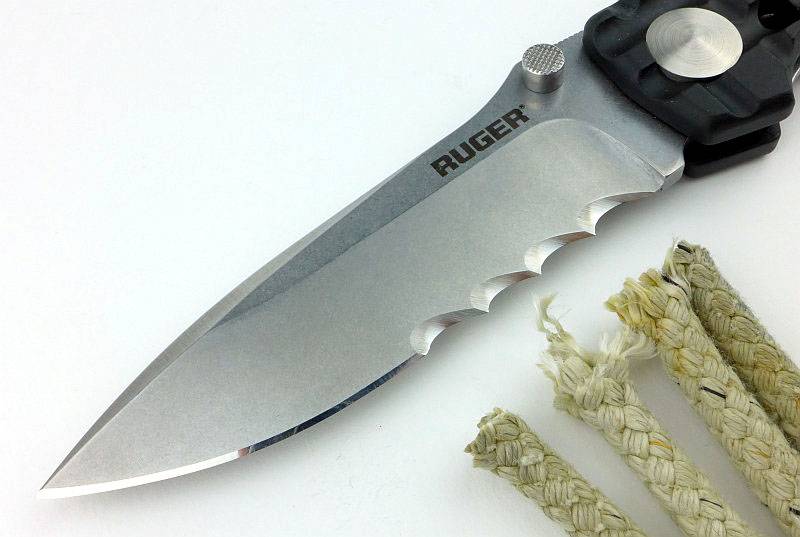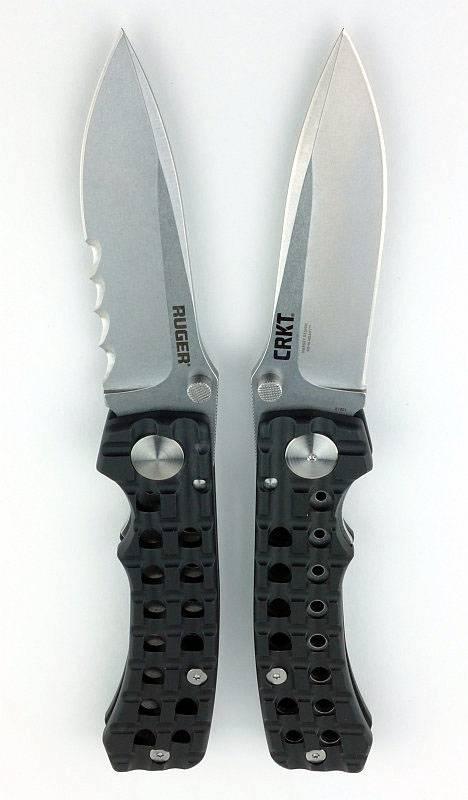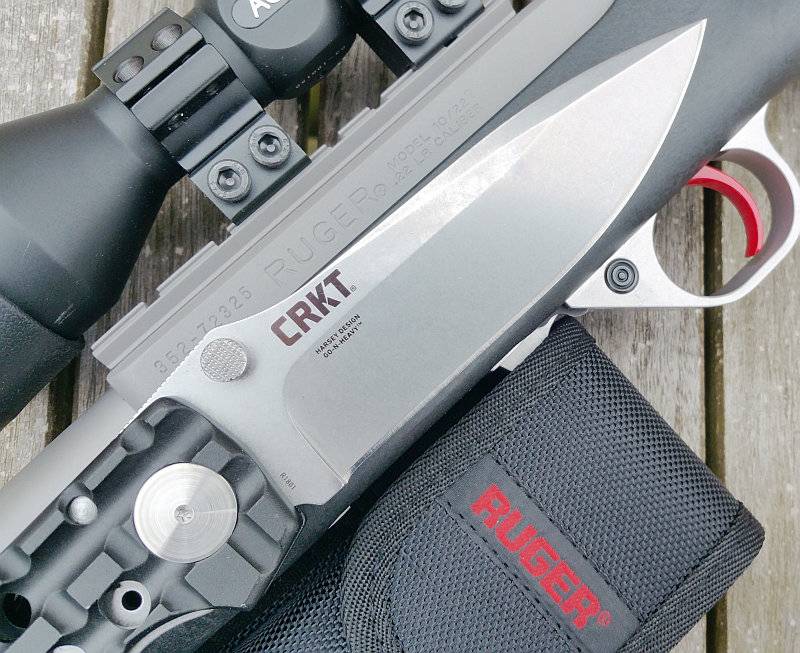After reviewing the Böker Plus Kwaiken Flipper, while at IWA 2016 I was able to speak to Lucas Burnley about the original Kwaiken folder and this new ‘Mini’ version of the Kwaiken Flipper. This review is of the new Kwaiken Mini Flipper, a scaled down version of the Kwaiken Flipper.
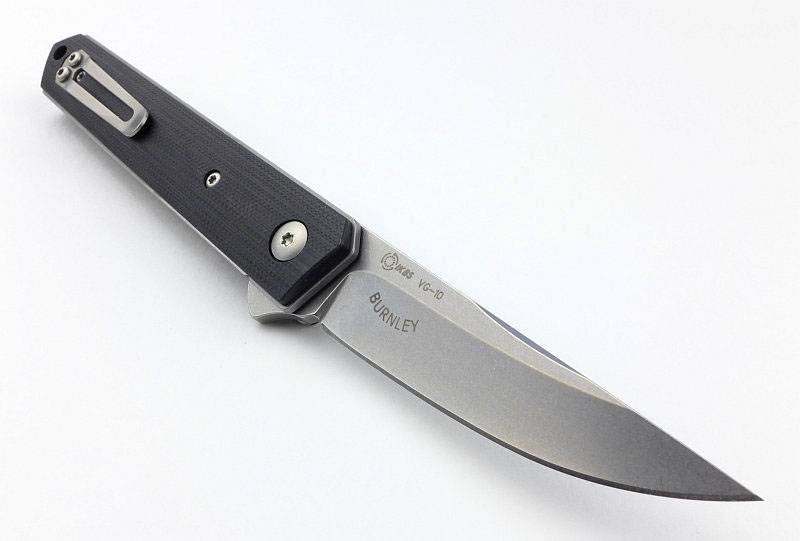
The Blade and Handle Geometry:
Most knife specifications have a basic description of the blade geometry, but in this section I will be taking a more detailed look at geometry and balance.
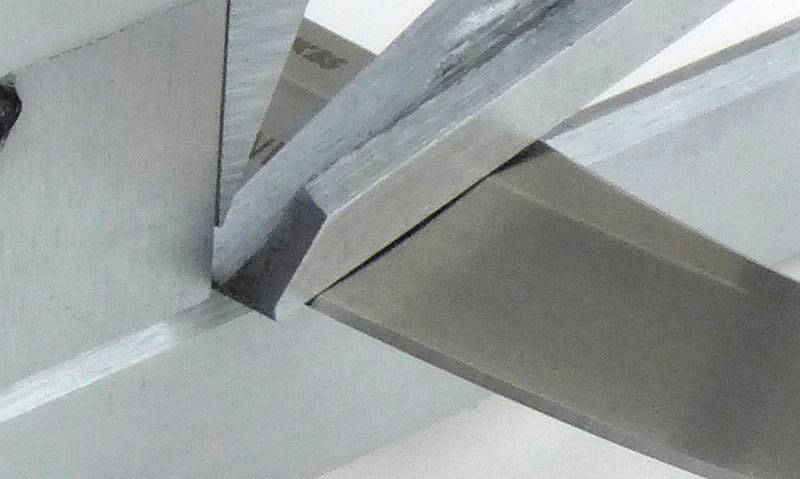
Using a set of gauges and precision measuring equipment including a Vernier protractor, callipers, fixed radius gauges and the unique Arc Master adjustable radius gauge (the one that looks like a crossbow).
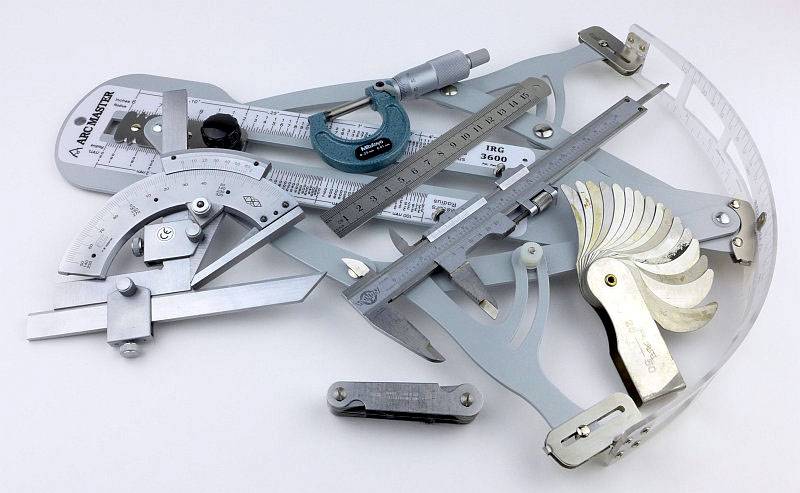
These measurements have been tabulated and are presented along with a few reference blades (8″ Chef’s Knife, 5.5″ Santoku and the popular Fällkniven F1).
Key aspects such as the primary bevel angle, grind type, blade depth, blade thickness, length, weight are detailed, along with balance information.
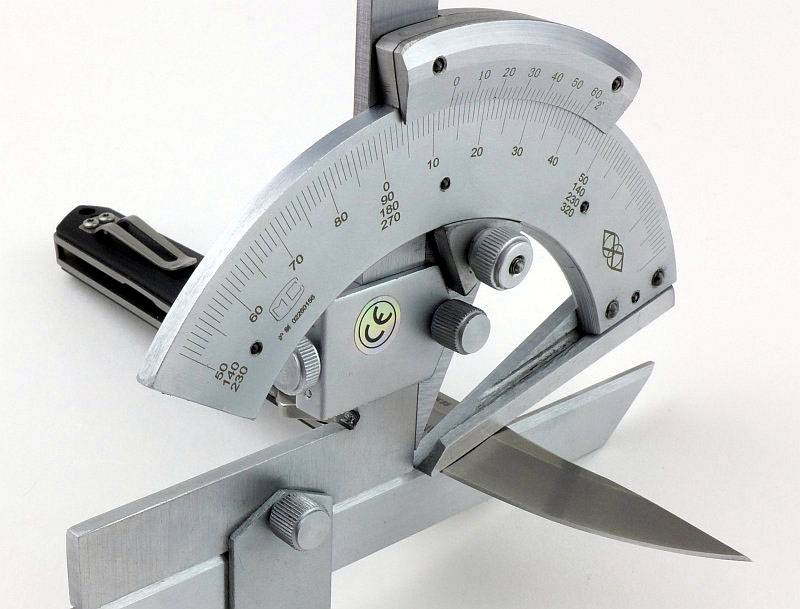
The ‘Balance relative to the front of the handle’ tells you if the knife will feel front heavy, or if the weight is in your hand (a positive value means the weight is forward of the front of the handle). The ‘Balance relative to the centre of the handle’ indicates how close to a ‘neutral balance’ the knife has in the hand.

In the case of full convex grinds the approximate centre of the grind is used for the primary bevel angle estimate.
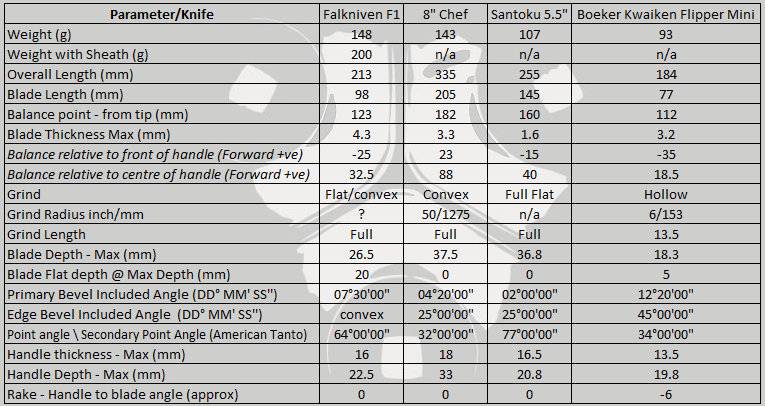
The blade is made from VG-10 steel.
Explained by the Maker:
The reasons for certain design choices may not be clear when simply looking at an object, so this section is intended to give an insight into the thinking behind a design by speaking to the designer themselves.
Unfortunately I can’t always get time with the designer so will use this section to include relevant information about the knife and its designer.
While at IWA 2016 I was fortunate enough to meet Lucas Burnley and have the opportunity to talk to him about the Kwaiken Flipper and its development and design including the latest ‘Mini’ in this review.
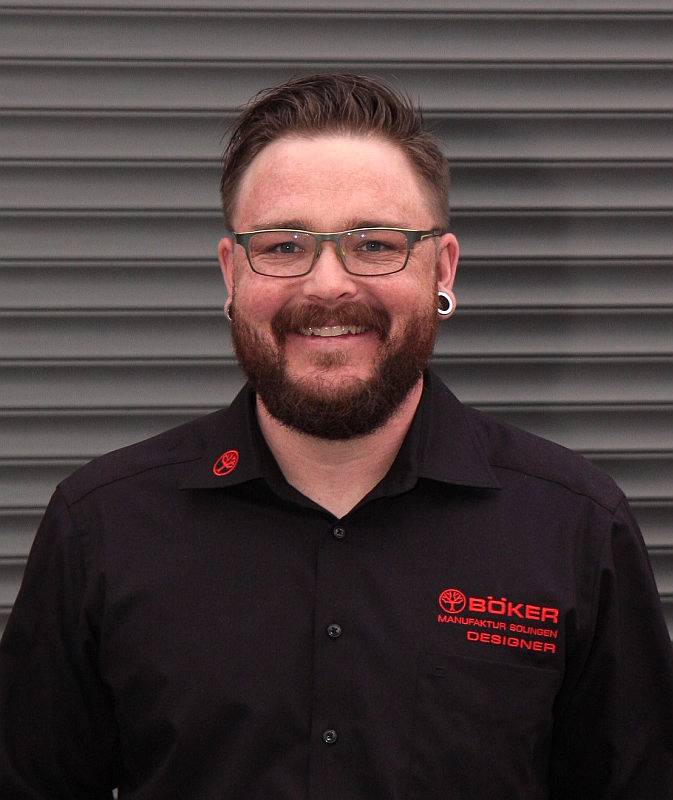
(Photo Credit – Oliver Lang-Geffroy)
The original Kwaiken was in fact a fixed blade, and the folder came from that fixed blade around eleven years ago (approx. 2005). The fixed blade Kwaiken is such a simple design it was a hard translation into the folder, and to date is the hardest thing Lucas has designed.
Aspects such as the fully enclosed blade, the detailing on the spine and the sleek lines were the main reasons it was difficult to work out the mechanics, and how to make it, making it a stretch for Lucas at the time.
The design is completely linear and slender which is what the Kwaiken is known for. At the time, Lucas’s design style (apart from the Kwaiken) was very curvy with big wide blades and the folders he was making were really ‘swoopy’, so to strip the design down to the point the entire blade fits within the handle, yet still has the same proportions of the fixed blade was a real challenge.
Not being able to use cord wrapping for the handle meant there was a need for additional grip, and the shadow-boxing (the step between the scales and liners) is actually a gripping surface in a similar way to jimping. So the shadow-boxing detail is a completely intentional feature and not included for easing manufacturing tolerances for the production knives. In fact including this feature added extra work as for the custom Kwaiken folders as Lucas would first make the scales to size, and then mark them and hand cut them to the final inset shape.
Asking Lucas about his own workshop and how much automated machinery he has, he mentioned how completely different the approach to CNC machining is to making by hand. Although making by hand is not the most efficient way, if he makes a mistake he can correct it, if he wants to change something he can change it, with CNC machining you have to plan from the start all the way to a finished product. Currently he does use the CNC machine to make a parts-set for a knife which he then assembles and hand fits everything to achieve the really high quality he demands. Whatever method might be used, Lucas feels it is unimportant for there to be a distinction between a custom knife maker and a handmade knife maker; he can forge a knife, machine a knife – he makes knives, and is completely open as to how his knives are made. However, saying that, the processes need to be satisfying to Lucas; he might want to learn how to use CNC machinery simply because it’s fun, after that, if people like that fact, great, but he will make what he wants, how he wants, explain to people how it is made, and then they buy it or they don’t.
Back to the Kwaiken Folder; initially this design didn’t start with a flipper, and the original custom knife had a thumb disc. The flipper was the next generation of the design.
When the first Böker Kwaiken folder production knife was released (thumb disc version), there were complaints because some people had a hard time opening it. This was because Lucas wanted a really small thumb disc and this became a good lesson in the differences between a factory design versus custom knife making. When Lucas makes a custom knife he can absolutely tune that knife so it opens exactly the way he wants it to every time. He can then explain to the user that this is a small thumb disc and instead of treating it like a lever, you need to treat it like a button, pushing down on it. As the design was now making its way into the hands of people not so familiar with thumb opening knives, without the benefit of a custom tune and one-to-one customer contact, the decision was made to move to a larger disc. Production design has to be very understandable to everyone.
The original Thumb disc size.
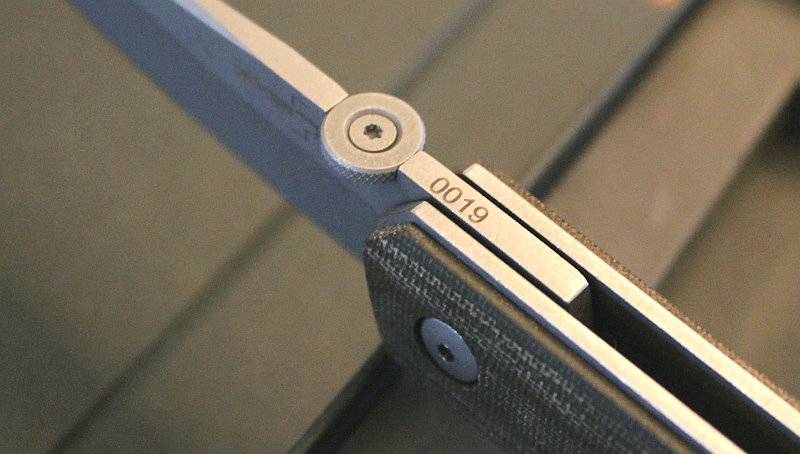
(Photo Credit – BladeBarrelBezel.com)
The new larger Thumb disc has been fitted and is shown next to the original.
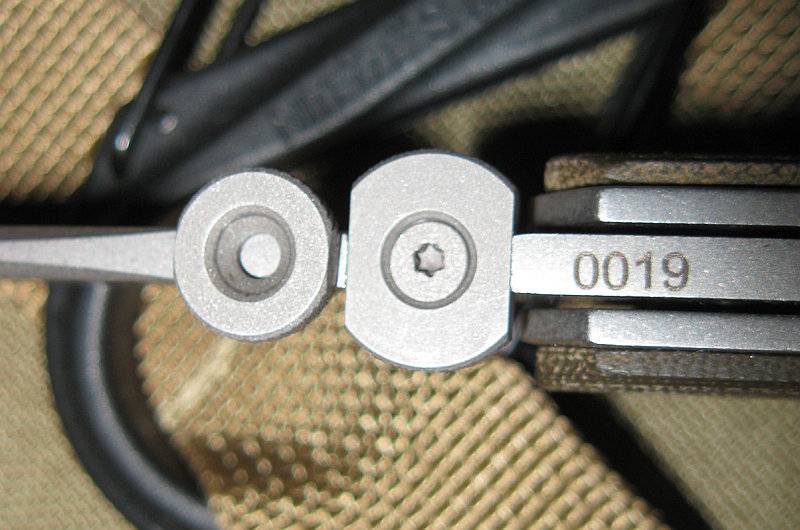
(Photo Credit – BladeBarrelBezel.com)
Lucas asked himself how he could make the Kwaiken folder more understandable and more accessible for everyone – that was why the flipper was introduced. It turns out however, that the flipper had other advantages; it allows the handle to go back to being straight, completely linear and clean, which is how Lucas wanted it in the first place. The ‘flip’ side of this (excuse the pun) is that now you have the flipper tab sticking out. When Lucas designed the Kwaiken flipper, a lot of the knives out there had very large flipper tabs, so he concentrated on working out what it is that really makes a flipper work. In the case of the Kwaiken this results in the tab being shaped like a wheel to allow prolonged contact with it as the blade deploys; this concept allows the tab to be as small as it is (in fact Lucas feels he could probably go even smaller). The goal was to keep it as clean and as small as possible, yet remain intuitive so anyone could pick it up and use it.
Concerning overall design, though Lucas considers the knife a tool, he also recognises the fact that it might be used for self defence, so includes attributes to support that. There is the simple fact that any knife is better than no knife, but here we have a folder so the first disadvantage is that you have to open it. With the Kwaiken, straight out of your pocket, even the folded knife was intended to also be better than nothing, with the taper and slight point of the handle giving you a kubotan style pressure point weapon. This is not something you will see listed as a feature or selling point but is part of the thought process behind the design.
When designing a knife, unlike other products that need to ‘perform’ within measured parameters, the process is more about visual correctness. Things have to ‘look’ right and be intuitive. For Lucas there is a critical interaction in the design between curves, angles and straight lines, and he tries to create tension in his designs. A knife with only curves can be boring, a knife with only angles, though modern looking, can also be boring; for Lucas there needs to be a balance and interest created from combining these.
In the Kwaiken folder, the mainly linear design has a few curves, the sweep from belly to blade tip, and the hollow grind. In fixed blades the choice of grind can be highly driven by the purpose of that knife, be it a small carving knife, or a large chopper. With folding knives you have much more flexibility in choosing the grind. Using a hollow grind takes out more metal and reduces the weight as well as adjusting the balance point. Many of the design features incorporated into Lucas’s designs (such as the scallops in the spine) are not for a particular purpose, but simply to add interest and look good. He doesn’t want his designs to be instantly understood, but instead needing you to look at it again and again to take in the details.
Due to the size constraints inside the Kwaiken, to be able keep blade fully inside the handle, an internal stop pin was needed. This further constrained the space for any bushings and with a small narrow and light blade which needs the action to be slick enough for a flipper, the IKBS bearing system is ideal. Currently Lucas is working on increasing the size to allow the use of caged rather than loose bearings in the next generation of the Kwaiken folder, making user maintenance much easier.
And now the subject of this review, the Kwaiken Mini Flipper, a scaled down version. Miniature is truly scaled down, whereas ‘compact’ is generally scaled down in certain elements but not in others. With the Mini, starting with the blade length, the blade has not been reduced all that much, reduced by only half to three quarters of an inch, but being a folder, with this small decrease in blade length, overall you lose twice that. The knife doesn’t lose much blade, but it gets much smaller altogether.
The reduction in size makes it such a convenient length, Lucas said he would not be surprised if the Mini becomes more popular than the full size version. Many people are not that comfortable carrying a large folding knife, and the Kwaiken is quite a large knife, so the Mini gives you all of the style in a much easier to carry package.
One the most fun aspects of the Kwaiken for Lucas is all the modifications people are making to the basic knife, and he is really looking forward to seeing that with the Mini as well.
The ‘Burnley Böker’ has become a very influential design, affecting what people think of as a Kwaiken more towards Lucas’s design than the original Japanese knife, this has only really been possible due to the collaboration with Böker and getting the knife into so many people’s hands. Though Lucas appreciates exclusivity, he likes to be inclusive. Lucas wants to make his product, and he wants them to be very high-end, so they are going to be exclusive purely because his own output is limited; he just can’t make enough. The factory collaboration provides a starting point and at a usable price, and allows people to be part of the Kwaiken wave without having to find a Burnley original custom.
Many owners of original Burnley custom Kwaiken folders have bought the Böker version as their ‘user’ keeping the original as a display piece. When asked how he feels about the fate of his crafted knives, where every aspect has been optimised to make it the best tool it possibly can be, yet many never get used at all, Lucas responded by saying that the most important thing for him is that the owner gets value from it in their own way, whether that is to be able to pull it out and show its perfection to friends, or to use it. All of Lucas’s knives have been made to be used and used well.
Whenever moving to production, it means suddenly dealing with a lot of different personalities and opinions and there are going to be problems. For Lucas, it is the relationships with the companies he chooses to work with that are most important. You have to be able to have a problem, look at it, and communicate to be able to get it fixed. Working with Böker has been mutually beneficial for both Lucas and Böker and they have both learned from each other. The goal for Lucas is to create icons and to do this working with a factory as a long term relationship, not to produce a single model that fades away, just to get a pay cheque, but to continue to build (as can be seen with the progression of the Kwaiken folder). Icons come about because they are made, and then made available, and then made continuously.
Showing the continual development of the Kwaiken Folder, here are the versions made so far (see photo below)-
1. Böker Plus Kwaiken Folder
2. Böker Plus Kwaiken Folder Orange
3. Böker Plus Kwaiken Flipper Titan
4. Böker Plus Kwaiken Flipper Carbon
5. Böker Plus Kwaiken Flipper Damast
6. Böker Plus Kwaiken Flipper Tactical
7. Böker Plus Kwaiken Mini Flipper G-10
8. Böker Plus Kwaiken Mini Flipper Titan
9. Böker Plus Kwaiken Flipper G-10
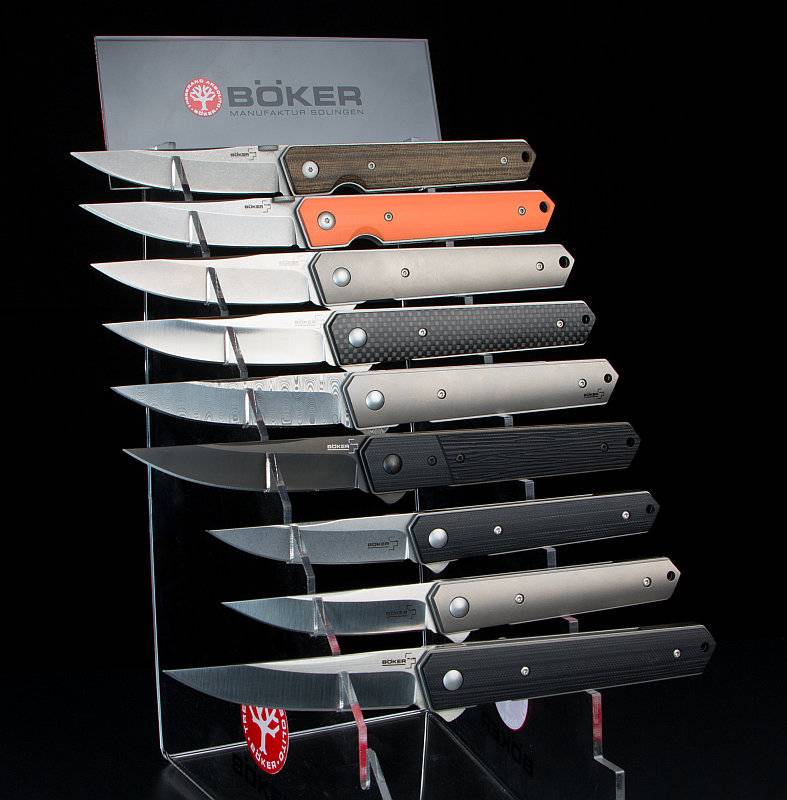
(Photo Credit – Böker)
The work is still ongoing and there are a few more versions of the Kwaiken folder in the pipeline, a slim framelock version and a compact version. Though previously only Lucas’s knives have had a duplex grind on the blade, this is also something that is being worked on for the production models, but it is difficult. At the time of speaking the duplex blade grind is on about its fifth version and is getting really close to being ready.
A few more details:
The Kwaiken Mini Flipper arrives in a presentation box.
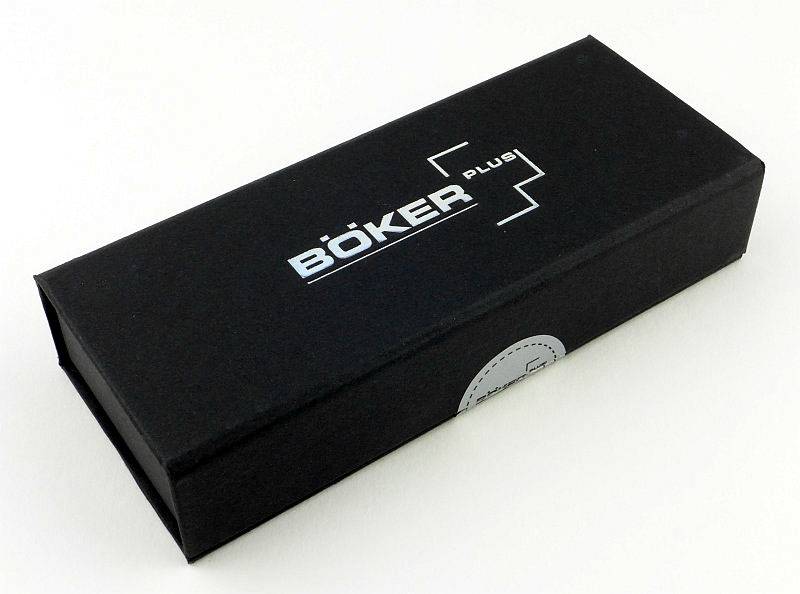
Before opening the box, here is the full size Kwaiken Flipper next to it.
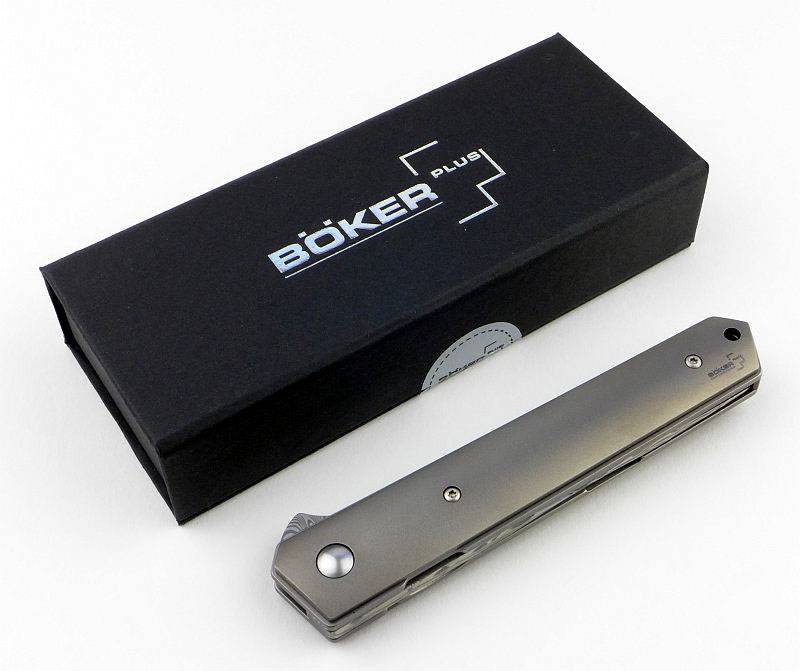
The box has a magnetic closure, and the knife arrives in a small plastic bag.
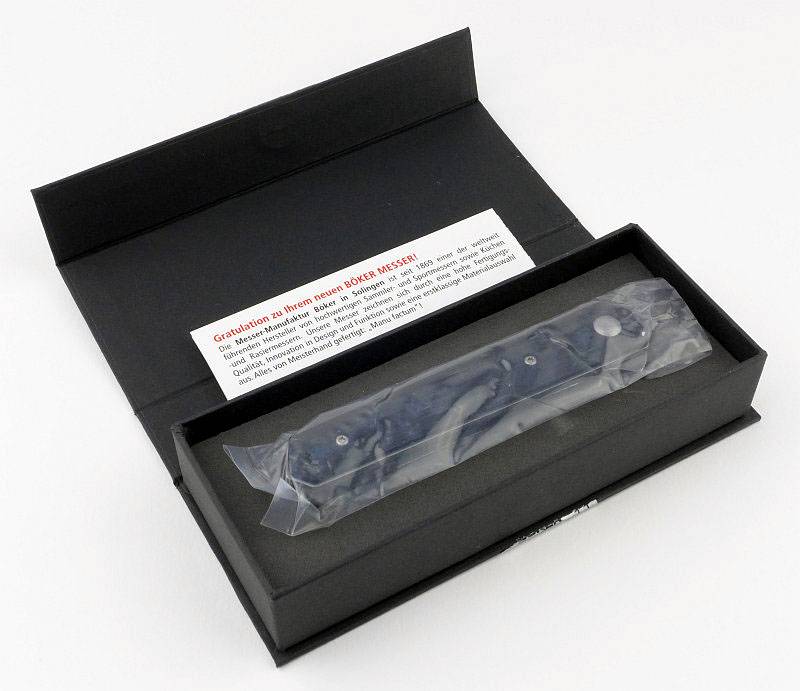
This is the G10 version of the Kwaiken Mini – there is a Ti version as well.
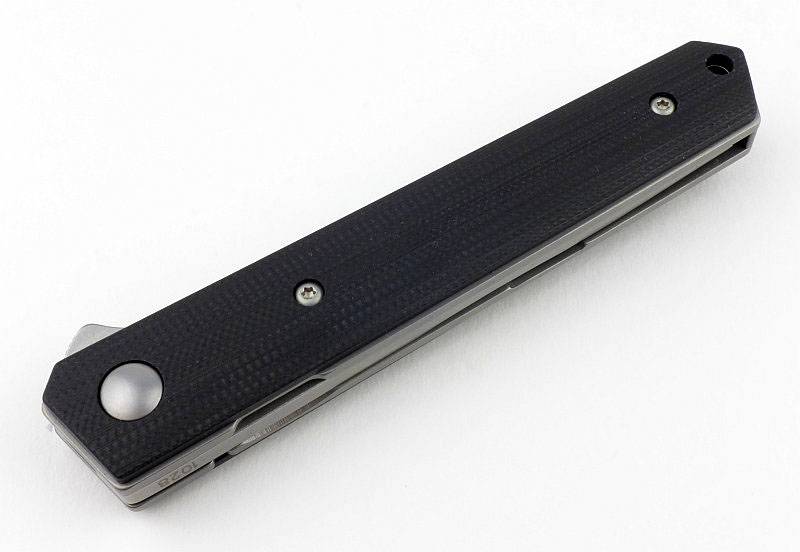
Though only a little shorter the scaled down Mini appears a lot smaller than the full size version.
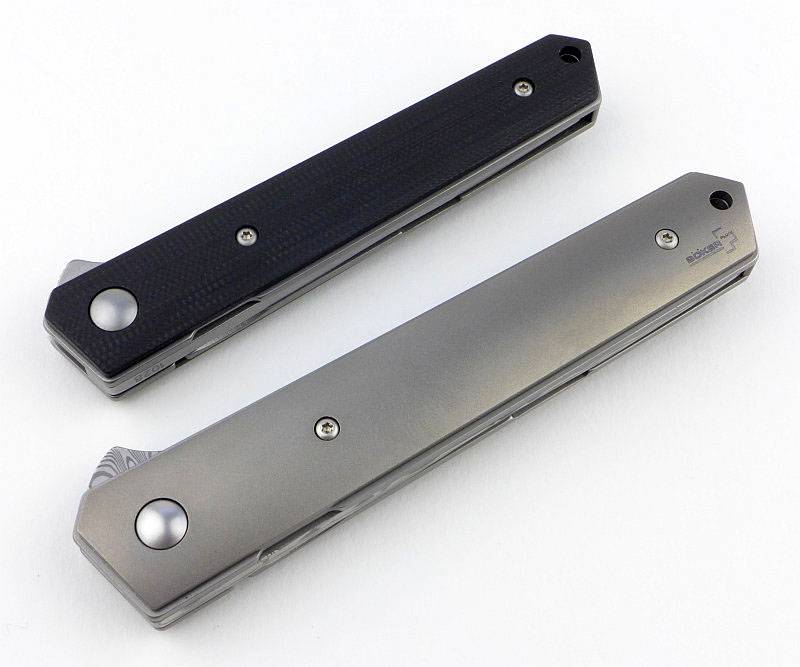
Thanks to the fully concealed blade, the Kwaiken Mini Flipper will sit with the flipper tab upwards.
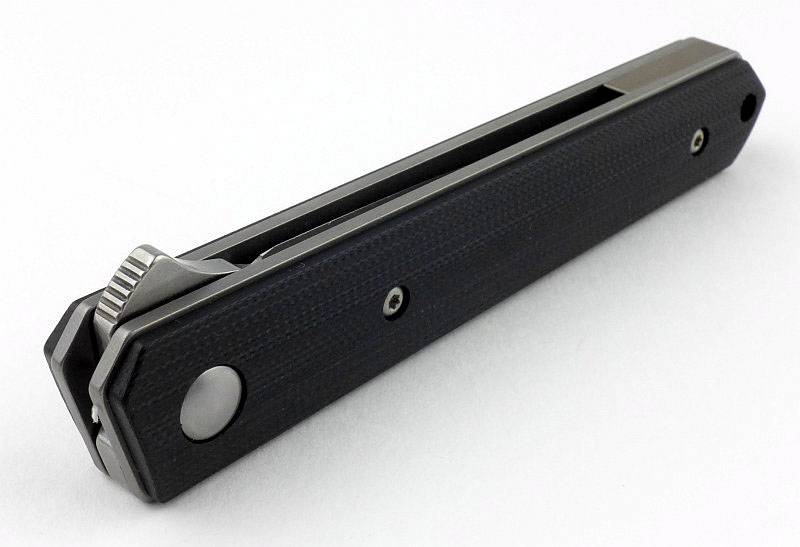
Turned the other way up you can see how the blade is fully enclosed in the handle.
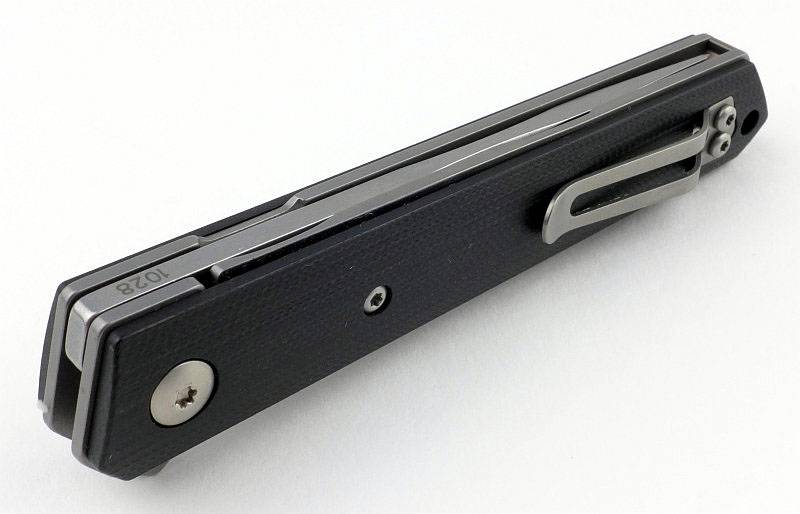
The Kwaiken Mini Flipper also has a mini clip.
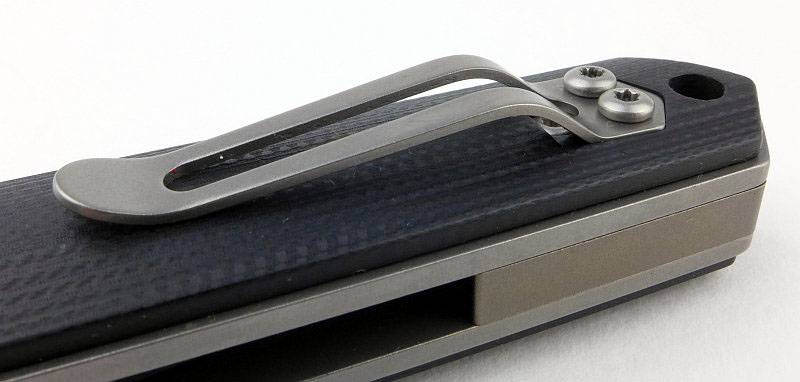
With careful design, the flipper tab has been kept small, and includes jimping for grip.
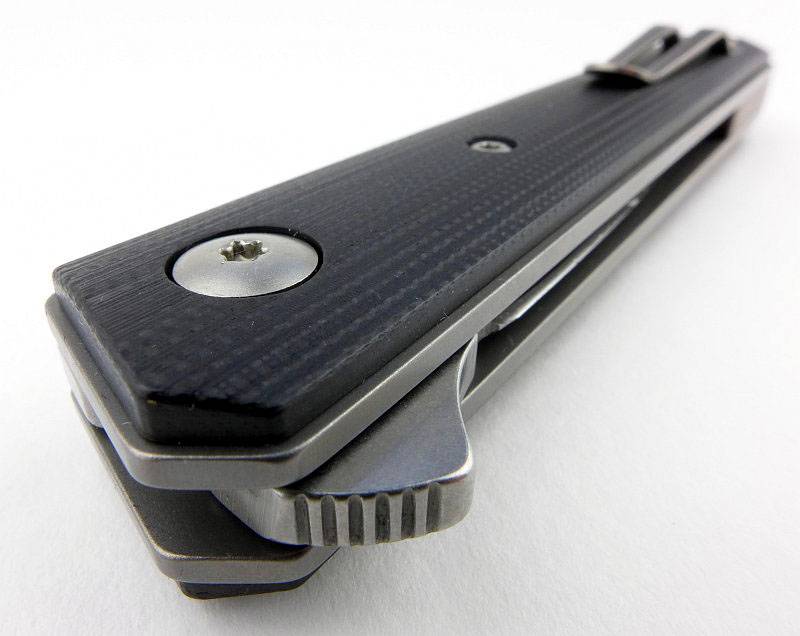
Top right in this photo you can see the locking surface on the blade tang and just visible in the bottom left quadrant is the concealed blade stop pin.
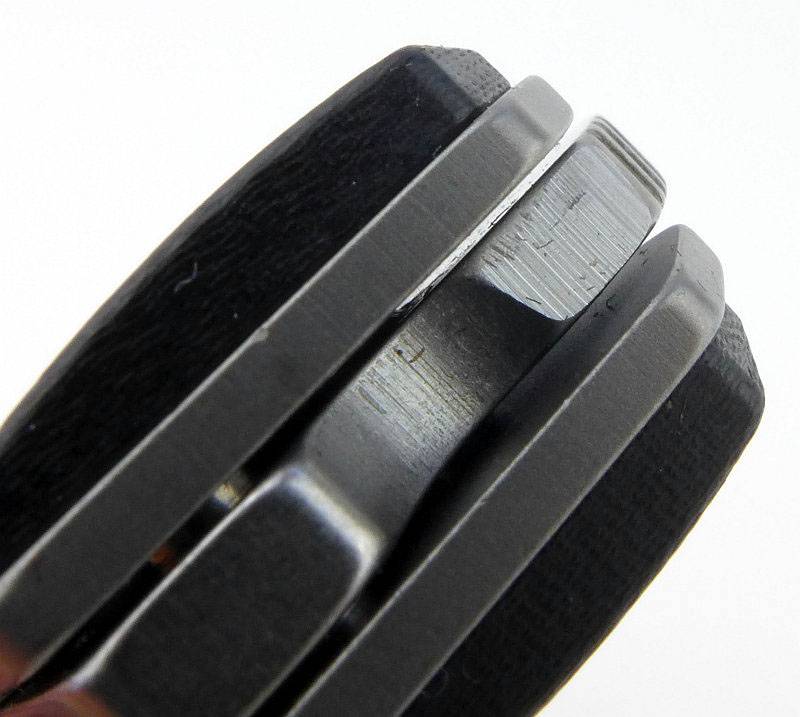
Blade centring is excellent and only looks slightly off here due to the uneven edge from the final sharpening.
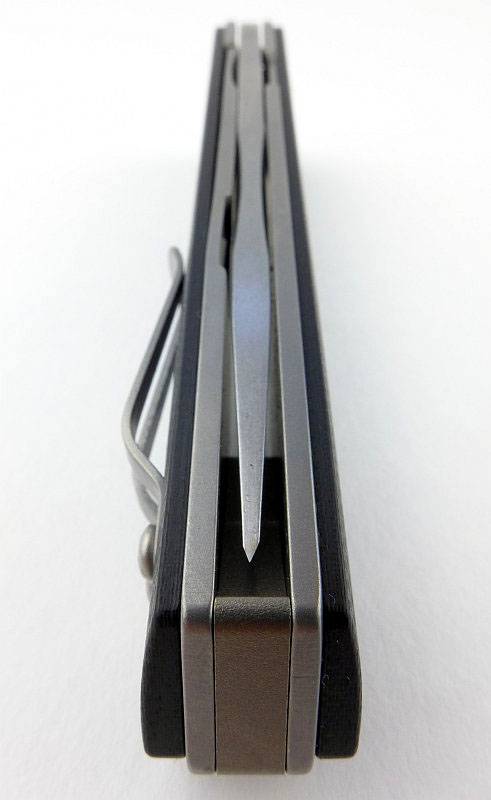
Out of the box, lock engagement is not that deep, but is still rock solid. Also note the cutout of the liner opposite the lock to allow the lock to be released.
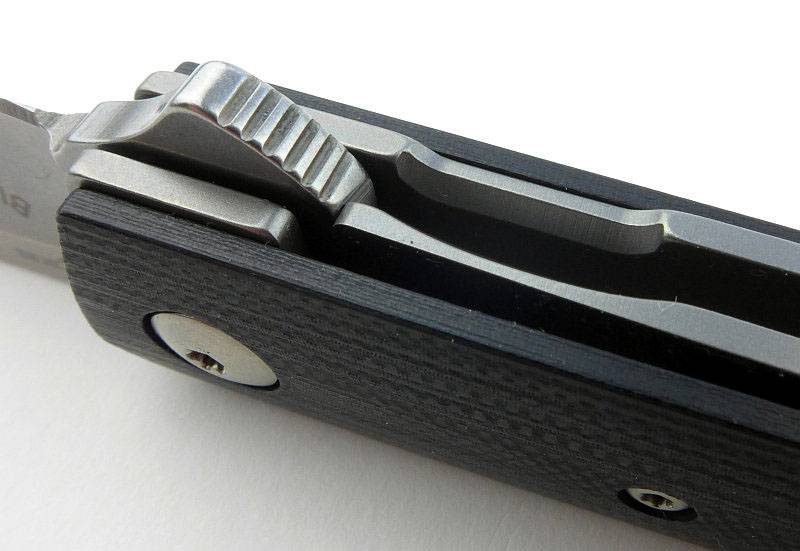
The lock bar is part of the liner, and here is the section that has been thinned to create the lock bar spring.
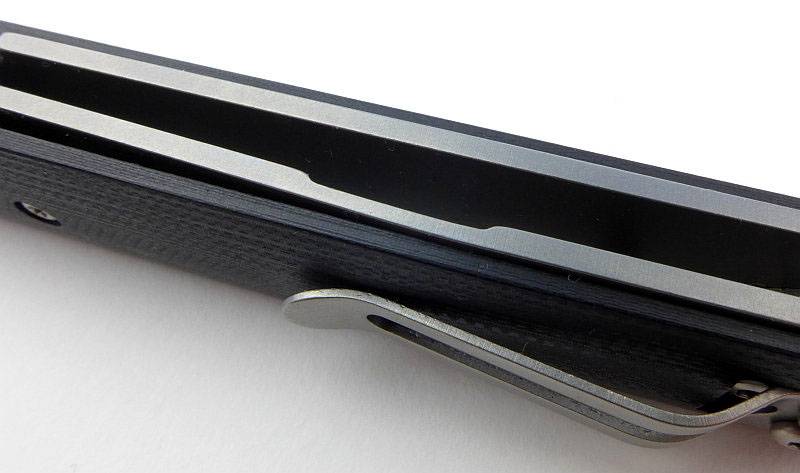
Looking deep within the knife you can see the detent ball which holds the blade in the closed position.
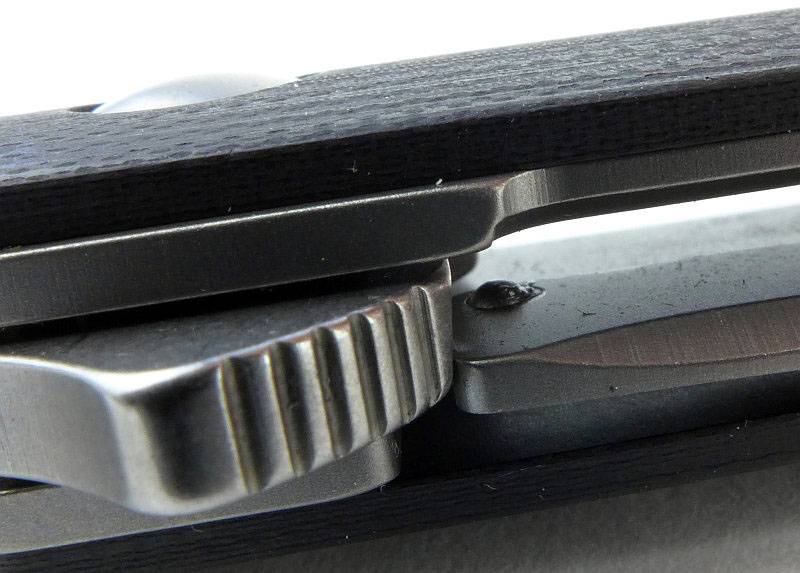
Classic Burnley Kwaiken lines have the straight spine and curve from plunge line to tip.
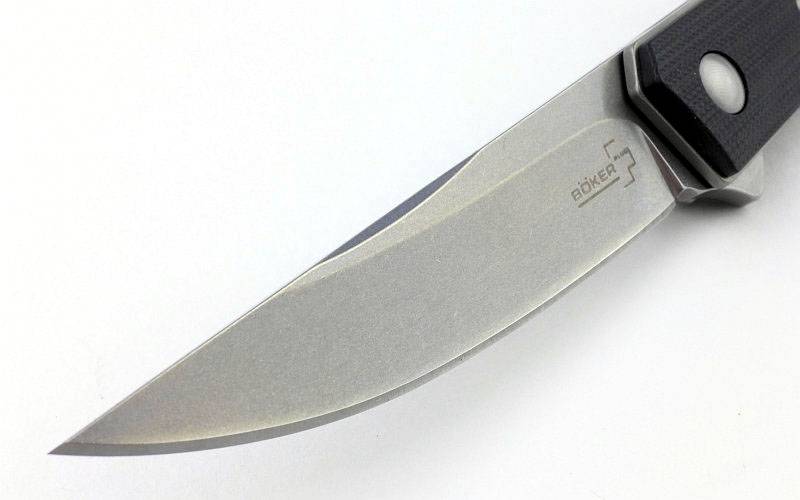
The knife’s credentials are marked on one side of the blade, a Burnley design, VG-10 blade steel and using an IKBS bearing.
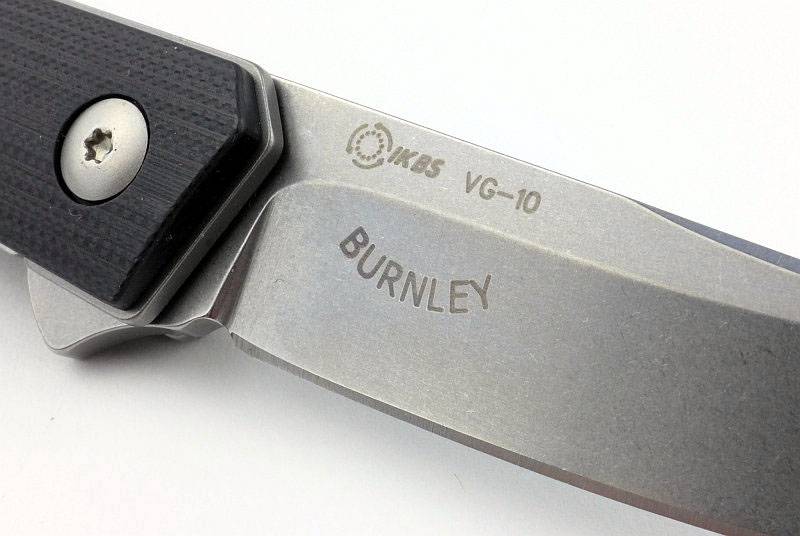
On the opposite side of the blade is the Böker Plus logo. The blade is stonewashed, and this photo also clearly shows the plunge line and sharpening choil.
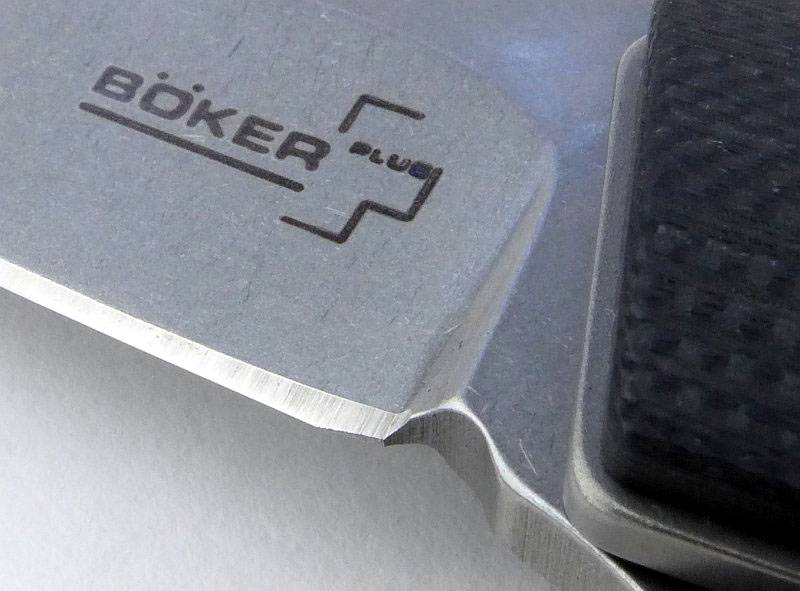
A different view of the fully concealed blade.
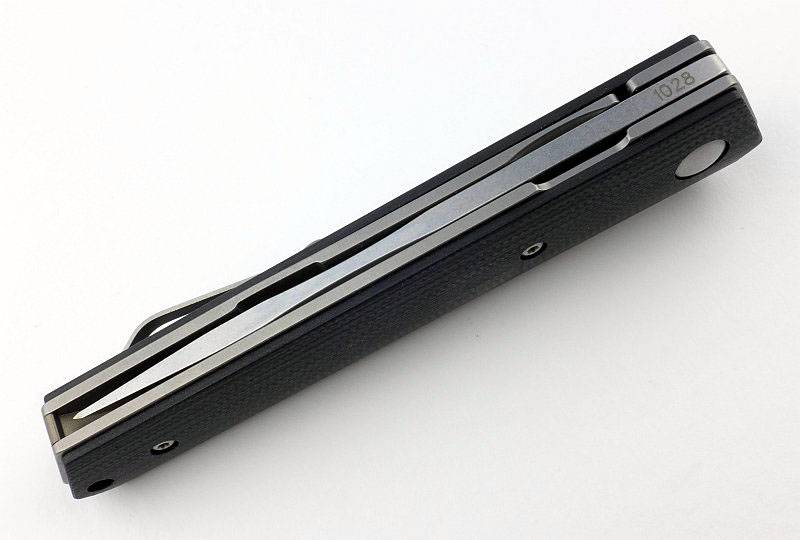
Torx bolts hold the clip and scales on.
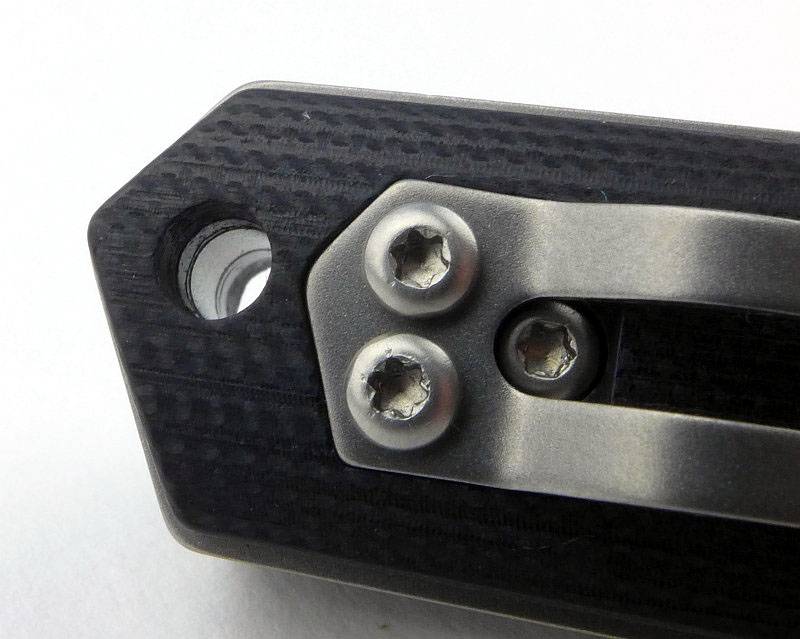
The blade has a small sharpening choil, but if you look closely, the factory edge has not quite made it all the way back to this.
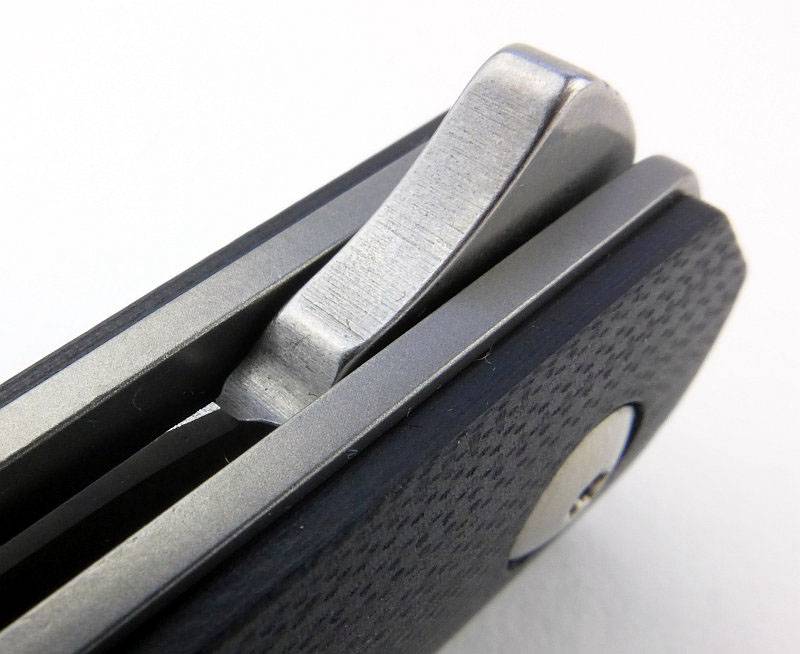
With space being so limited, the actual cutting edge is quite near the surface of the liners with the blade closed.
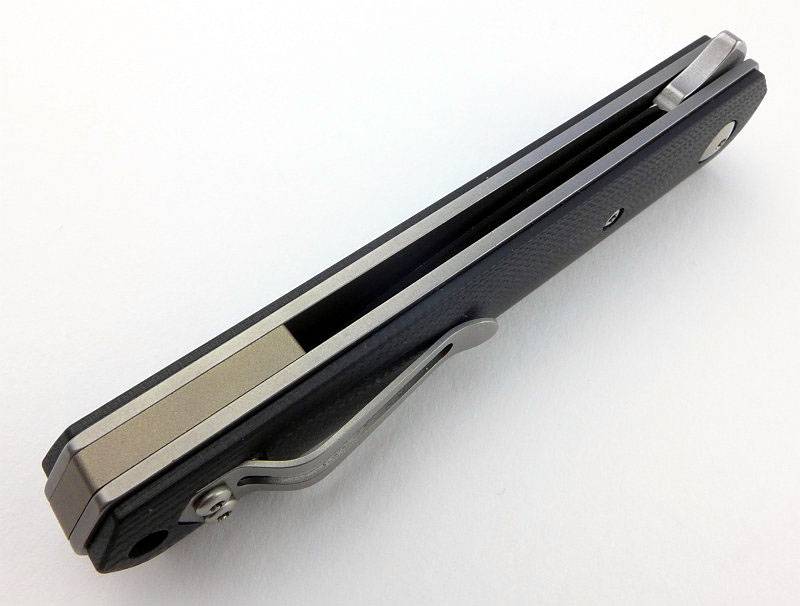
What it is like to use?
If you start with the full size Kwaiken Flipper, the Mini can feel exactly that, Mini. Perhaps too small, but we must not stop there, as in the course of this testing, after the initial photo shoot, I made myself put away the full size version to allow myself to become accustomed to the Mini in its own right.
Taking the two versions on their own and putting them back to back, the scaling down is clear.
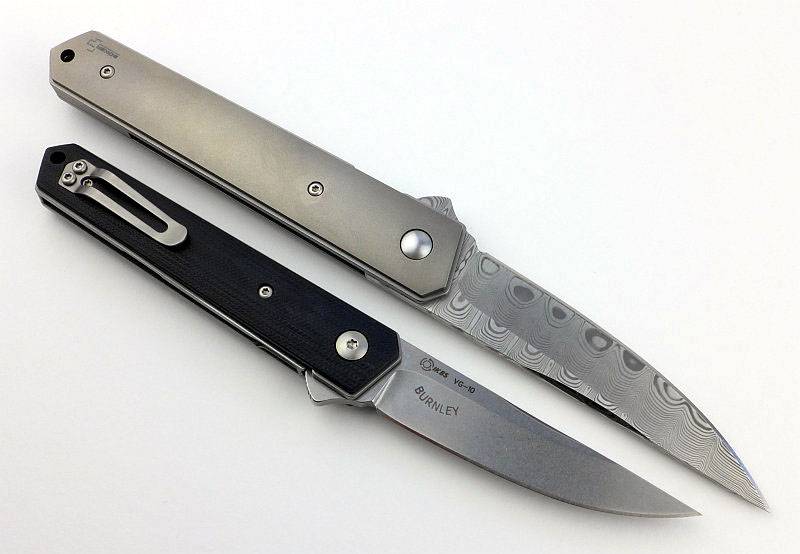
But put this in context with some other knives, and here it is next to the Fällkniven F1 and a Spyderco UK Pen Knife along with the full size Kwaiken Flipper. The full size Kwaiken is a large folder and only seems less so due to being slim, so the Mini is still a good sized knife.
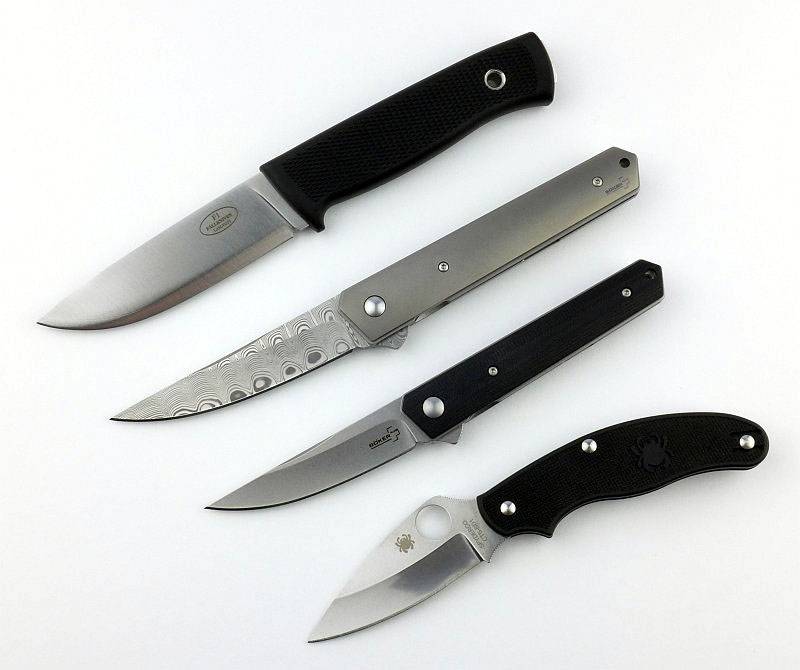
There is plenty of handle to get a good grip. (I take XL Sized gloves)
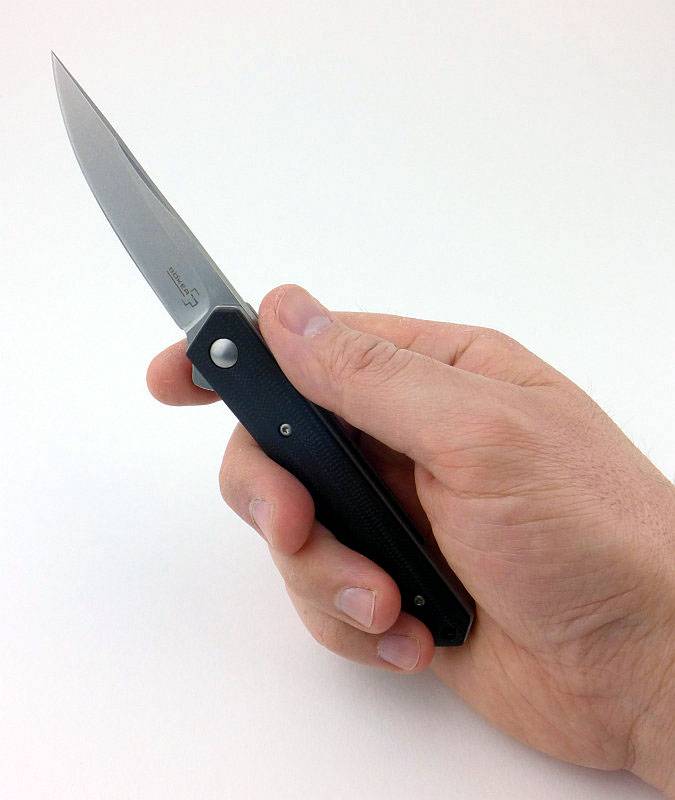
With the Kwaiken Mini Flipper used as a regular carry, it is much more discreet being smaller and lighter. It still retains all the character of the original, and I found myself forgetting what the full size version feels like and not missing it.
We all have different knife carry laws to contend with, so size can be an important factor. It the UK, there is no difference in law between me carrying the full size or Mini, but if I have good reason to carry a locking knife or I’m simply using it on private property, the Mini is much more pocket friendly.
Having a smaller and lighter blade, the flip is not quite as reliable as the full size Kwaiken Flipper and I’ve had a few misfires. Any misfire can easily be fully opened with a flick of the wrist, and if you maintain good contact with the flipper tab throughout the launch it rarely happens.
For the size of blade, the spine is relatively thick so this does start to drag when cutting deeply into tougher materials. For point-work though the Kwaiken blade shape is highly effective so much so you have to be careful not to puncture too deeply.
Initially I was sceptical about the Kwaiken Mini and it seemed too small; Why would I want to bother with a scaled down version of a great knife? Well, now I’ve lived with it I can see exactly why. Clearly you need to like the Kwaiken design, and if you do (why wouldn’t you?) then the Mini gives you all of the sleek lines and style, in perfect scaled down proportion that is far more pocket friendly.
Review Summary
The views expressed in this summary table are from the point of view of the reviewer’s personal use. I am not a member of the armed forces and cannot comment on its use beyond a cutting tool or field/hunting knife.
Something that might be a ‘pro’ for one user can be a ‘con’ for another, so the comments are categorised based on my requirements. You should consider all points and if they could be beneficial to you.
| _______________________________________________ |
_______________________________________________ |
| Things I like |
What doesn’t work so well for me |
| _______________________________________________ |
_______________________________________________ |
| Truly scaled down so faithfully keeps the character of the original. |
Relatively thick blade for its size. |
| Pocket friendly size. |
Flip is less reliable than the full size. |
| IKBS bearing. |
Pocket clip can be tricky to get started. |
| Fully enclosed blade when folded. |
|
| Sleek and distinctive style. |
|
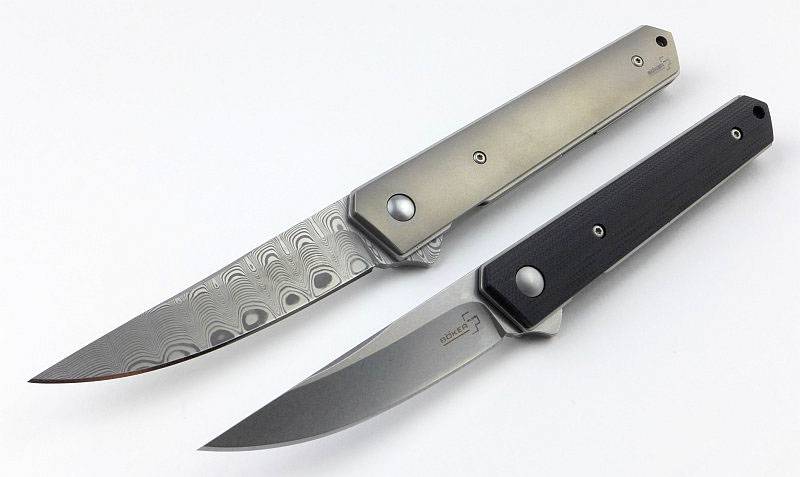
Discussing the Review:
Please feel free to add comments to the review, but the ideal place to freely discuss these reviews is on a forum. If you started reading the shorter forum version of the review, but followed the link this full exclusive review, please return to that forum to discuss the review there.
If you read the review entirely on Tactical Reviews, please consider one of the following to join in any discussion.
EdgeMatters – Sponsored Reviews (UK based Forum for Knife Makers and Collectors)
BladeForums – Knife Reviews (US based Forum for Knife Discussion)
CandlePowerForums – Knife Reviews Section (Largest and Friendliest Flashlight Community Forum)
